|
In pleasing consistency one of the fine portraits on display at the BP Portrait Awards at the National Portrait Gallery is a magisterial Frank Bowling (above) whose show I recently wrote about and who also was exhibiting in the summer exhibition. There has been some disparaging reviews of the show in some quarters and while it is smaller than this show has been in the past, I really enjoyed it. The Bowling portrait for example is excellent. The artist, Tedi Lena has superbly captured his appraising alpha gaze. Lena, got to hang out with Bowling in his studio. That must have been excellent. I particularly like the way the beard is rendered and the look over the top of the glasses. A little on the prize winners. As always not everyone is going to agree but I can see why they won. Starting with the winner, Imra in her Winter Coat by Charlie Schaffer (above left). It is a good portrait. Soulful, slightly mornfull face, detailed and well rendered coat but I suspect the reason it won is that triangular shape, the whole thing in fact is reminiscent of the Rembrandt self portrait that you can see at Kenwood House. Art judges love this kind of nod. The Crown by Carl-Martin Sandvold (Above right), is well different. The blurry presentation, well I can see how it is different and interesting but it doesn't work for me. Many people thought the same but you have to role with the judging on this case. However I have to say the third prize and the youth prize are in my view excellent. I was particularly impressed by Sophia and Carla by Emma Hopkins (above left). It is painted on an interesting surface, possibly polyester, something like that, which gives it this ethreal glow. The composition is very strong and the level of detail on the skin, the fur, everything. I would have given this first place, it won Youth Art Prize, and a deserving winner it is. I also really like the third prize winner (above right) by Massimiliano Pironti. It is called For Quo Vardis. What you don't quite get from the photo is the glow and the sheen to both the dress and the tiles. Those hands though. Aren't they great. The skill on display is quite breath-taking.
and the empty room beyond. There is a photo-realistic level of detail here with a very nice use of light and shadow. The central figure though, particularly her hair lifts it above photo realisim. She look like she is about to speak, or do something. Regal. Tina Orsolic Dalessio's The Poet (above left) is regal. A strong meditative pose. IT is a take on those old Victorian portraits showing, almost always white men, at their profession. I like that reference. The sitter is a beautiful woman and the use of light and shadow on the face and neck helps empahsise that. The flashes of sliver, very well rendered, help the painting lift out at you. This would have been my choice for first prize. Effective use of light and shadow can really lift a painting. Give it an extra depth and dynamism which is an element that the prize winners lack somewhat. These two don't though. Above left we have Aurelio by Ivan Chacon. Aurelio is the painters uncle if I remember correctly. It is very hard to capture someone in a painting mid movement. This Chacon has done superbly, like you are in the middle of a conversation with the sitter. There are a few self portraits in the show (such as the Crown) but my favourite of them is the one above right by Steven Higginson. There a number of things I like. I like the sofft pastel shading of the paint. I like the effect of the Venetian blind shadows across his face. Most of all I think I like that he looks like Professor Green.
It gives a real felling of heat. You can tell it was hot wherever that it is. I like the details on the tiling too, the scratches and the stains.
Lastly is the distinctly odd Eden (protection) by David J EIchenberg. It is, if I recall correctly. painted on aluminium but the unusual pose, the superb way the gold and silver metal is presented, the way the light is reflected on the sitters jaw and her odd sidewise pose all really appealed to me. Also it reminded me of Billie Eilish. So go along. It is free, it is on until October and there are many more paintings than the ones I have talked about here.
0 Comments
Natalia Goncharova was a name I'd not heard before I saw the posters for the show of her work at Tate Modern and went along. I enjoyed it. That's the headline. Russian impressionist moving into abstract impressionism that is the other headline. It is on until 8th September if this peeks (peaks?) your interest. She paints in a bold vivid style portraying a range of subject as you can see from the quartet above. Angular still life, amusing parrots, charming blossomed path and then an utterly intriguing pair of wrestlers reduced to fighting coloured monsters. My money is on green. This kind of range can be seen throughout the entire show. I did have all sorts of notes on the woman herself, but I have lost them. All I can remember is that she was Russian, but must have at some point left Russia otherwise she would have never have got away with the religious paintings we see later. But part of the Russianness can be seen in paintings of peasant women dancing, their slightly luminous garments popping out from that green floor (above left) or working in a garden (above right). Goncharova is good at flowers. I like the way she exaggerates the size and makes them more geometric. I also like the way the ground is depicted, almost like a parquet floor. As you amble through the show (assuming you do, I wonder how many people who read this will go/ have been) you will come across a self portrait of the lady in question, clutching a bunches of flowers (above left) presumably on the rather sensible basis that if you are good at something you should do it as often as possible. It is a surprisingly straightforward self portrait. Neither portentous, angsty or pretentious in the way that many self portraits are. It is in this main room at the start of the show that one of my favourite paintings resides. It is a winter scene of people gathering wood, Wenceslas style (above right). She has managed to capture a real feeling of cold, with that oppressive stormy sky, and you can really fell the wind blowing. I especially like the over-large snowflakes. Exaggerating the size of things is a trick that Gonchorva does well and I like it. I also like the way the snow flakes are gathered round the tree, almost like they are ice wintery leaves.
Then into the far room and a selection of stunning paintings, all of them on a religious theme. There is a tendency for religious paintings to be, well dull. These are far from dull. It is a bit of a long shot but you can see from the painting of some saint other other (or possibly Jesus) behind a set of candles (above right) is fantastic . The arc of gold at the back echoing the candle of gold at the front, then this angular white robed figure, centre stage and commanding our attention. It is superb. There are more in this room, and I think it was my favourite room in the whole show. It was certainly the one I spent the most time in. There was this glowing, iconic (literally) golden triptych with a christ like central figure flanked by two angels (above left). Here the use of different sized canvases is part of the composition and we have the return of what appears to be a theme of contrasting green (the robe of the angel on the left) and red (the wings of the angel on the right). This time my money is on red. I love the way those wings glow, as indeed does that halo. Darker in texture, all the more so the large (empty? - better for being empty I think) scrolls can pop out at you are these four saintly figures (above right). There is a curious device at work here where their heads are all scrunched up at the top of the painting, like they are actually trapped in the frame. It is almost certainly deliberate but I like the idea that she started from the bottom, ran out of room and swearing to herself just decided to go with it. Of such mistake great art is made. I like particularly the highlights on the clothing that bring them out from the background. I am thinking of going again, just to see this room.
could be smoke rings or just holes in the picture, really caught my attention. It is difficult to explain why but it did. Busier, more colourful, more geometric is a picture of some kind of machine (above right). I forget what. The almost transparent lines, really connect this painting together and give it a feeling of motion. Also, and this is the same for all of her paintings, her colours are never just one block of colour, but muted and toned.
they are either dancing people or some kind of band. There is also a very find large hinged screen, standing opposite of this, made of 5 or 6 panels of a similar composition. Having battered you with her talent in the final room Goncharova delivers a knockout blow with various prints and patterns including designs for costumes and stage backdrops for ballets (like the above left). Including Stravinsky's Fire Bird. I mean really. They are beautiful designs though and I particularly like the floral ones (above right) which reminded me of Japenese Block prints. The show is on until 8th September so you don't have long if you want to go. You should go, you will like it, or you know there is something wrong with you.
Next week I think I will give an oil company some much needed publicity by talking about their portrait award. Let us be Frank for a few minutes. Frank Bowling has a picture in the RA. He has a major retrospective of his work at the Tate. He is one of Britain's prominent internationally renowned artists. He is still alive and painting at the age of 83. His work sells for a fortune. Yet not many people have heard of him and the show of his work at Tate Britain got precious little advertisement or promotion. I got given Tate membership for my 40th and it came with a list of current shows. This one wasn't on it. Bowling is also black. It is difficult not to be suspicious and see a link between these two facts. If I was that Tate I would be making a very big deal of this. The show is on until 26th August and you should totally go. Don't worry the show won't be busy. It will be good though as I shall hopefully now demonstrate.
It is the motif on the right that I particularly like with that flower like structure that has a whirlpool quality that draws you into the piece. Although there were nods and similar stylistic points to other artists I had never seen anything quite like these before. Quickly though you are into the next room and Bowling has developed a more singular style and iconography. He has Ghanaian roots and the family home there (depicted above right) and Ghanaian elements features quite heavily. There is a very neat combination of abstraction and figurative elements in these paintings, and again this high colour quality. In the same room is one of the stars of the early part of the show and possibly my favourite painting of the whole thing. It shows a spiral staircase descending into a kitchen. It is a strangely familiar image and I do wonder if I had seen this painting somewhere before. The rails of the painting are highlighted in gold, the perspective distorted and the figures Baconesque and clownish. It is a powerful image. From here on in things get a bit more abstract, although the high degree of colour remains, for the most part. The first expression of this abstraction, is a room of maps, swathed in different colour or mixes of colour, visually violent images often and the Africa drenched in red I am sure has another message For me the more successful ones are the more sombre ones such as the one above, a vast canvas with eh earth merging from dark green in blue and almost black. It is like those images you see of the earth rotating from light into darkness. The one purple line at the end makes it look like an old fashioned photo negative. The deep colour gives it a aquatic more soulful feeling that I respond to.
Similar tonally, do a me tonally, well similar in feel is a mainly gray piece (above right). It feels like a close up of the moon. A mottled grey field, with pits and ridges and that broken swathe of orange arcing across the picture lifts the picture and give the grey more depth. It is possibly my favourite piece in the show, I love seeing more details and imagining it is a different thing. This was also my favourite room in the show. This develops into a theme called cosmic space. It has the flowing current feel to it. And of course like all good abstract art you see what may or may not be there. So the one the left seems to me to be a wave exploding over rocks, with that golden spray, and the one on the right looks like a stream of muddy water flowing into the water. Then Bowling gets all lumpy. A bit like Auerbach or a more cheerful Kiefer. Indeed if you pop back to my previous post or along to the Summer Exhibition you will see a very recent example. For me though, as interesting these one are, they are mainly only intellectually interesting. I like the colours but the ridges, as we Auerbach act as a barrier for me and stops me engaging. This develops into two themes, at least two groups that the show puts them in and it seems to work. One is land and the other, and the one I prefer is water and light. Again, and this probably tells you more about me than the painting I prefer the water and light section of which the above left is an example. I like the subtle blue and greens. Again the lumps are not as intrusive. Onto the next room and in this room, lots of colour, lots of lumps but for me the two best paintings of the room were these two pale, very indistinct paintings in the corner of the room. Just white and cream and soft yellow washed over each other.
Those lines in the middle really work. They are like scratches through the painting exposing something underneath. Beguiling isn't it. The other (above left) is a mess of blue, red, yellow, white etc, but that reductive description completely undersells this column of paint. The dark blue surrounding the colours gives that center piece a three dimensional feel, like a swirling portal.
Its a great show. It is open for another couple of weeks. Go along. See a less sung British great. 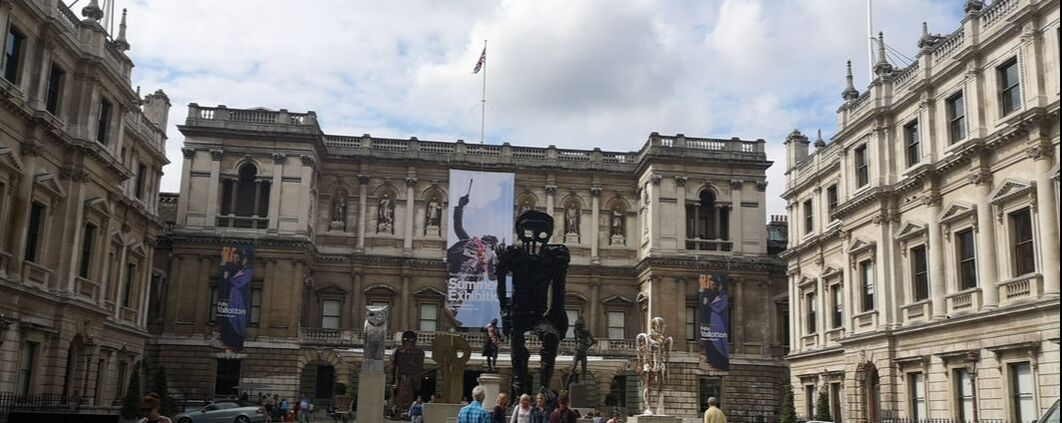 The Royal Academy's Summer Exhibition is back, as a coruscating assault on the sense. Once you have made your way into the main building and past the strange robot skeleton (above) you are greeted with the usual coloured walls and large array of paintings, prints, sculptures and things that fit into none of these categories. I have blogged about this extensively in the past but am only going to do one post this year. There are large number of tips for seeing the Summer exhibition but my own way of doing it is as follows. Resign yourself to the fact that you cannot see everything. Firstly because there is just too much and secondly because not everything is worth seeing. If possible go on a weekday, it is less crowded. Tuesday's are good. Most people work Tuesday. Walk through the show, gently clocking those works that seem good. Either for later inspection or if you feel particularly drawn to them, straight away. Because of the way the show is hung, things are at odd positions, I therefore wander through in a number of different directions, and always notice something different. Finally, I select a few works before hand and try and find them. This is not as easy as it seems. Well the result of this year's trawl is as follows. I shall start with the architecture. Often my favourite room. It is full of interesting ideas, brought to life with a high degree of skill and attention to detail. The architectural models, the good ones at least, are desirable both as artistic objects but also as concepts and the promise of something bigger. There were many I enjoyed but have decided to limit myself on this blog to just four. There was a theme in this year's exhibition of environmentalism and sustainability and this was reflected in what was on offer such as Piers Gough's Arterial Road (above left) which is all about roof gardens. The little trees are made I think of wire and copper and look like little earrings or other jewelry. I like also the stacked nature of the building with the green, bronze and then glowing perspex intervening layers. Suitably Jules Verne Sci-Fi esq in appearance is Katie Cunningham's design for a nuclear submarine reactor removal facility complete with public promenade (above right). It has that space station, battleship feel that appeals to me but I also enjoy the idea that there could be a public space in such a facility. The concept of trotting around above such delicate nuclear work creates a thrill but sadly, I suspect, one that will never come off. I like London Zoo. I like the aviary that sits beside the canal. I always enjoy the few pigeons that have snuck in there and are hanging out with the exotic birds. I was therefore intrigued to see Lord Foster's proposal for it's re-purposing as a monkey sanctuary (above left). It is a pleasing looking design complete with delicate trees, people and tiny swinging monkeys. The strip across the bottom, where I think the canal would be, contains detailed information about the design which is a nice touch.. I looks like a good design and I found myself wanting it to be built and to go around it. The next piece is not so much architecture as sculpture. It is made of a series of optic fibers arranged to give carved out interior. It is difficult to capture the shape and its effect properly in photography and I have not really succeeded (above right) but is has almost a cross between a spiritual and disco effect. It is apparently an idea for a seed bank by Thomas Heatherwick.
In a not to dissimilar style but much more steam-punk / dystopian future is Jason Hon Lun Ho's, The Pool of Tears (above right). The tears in this case being the both literal and metaphorical and the theme of climate change made very clear. I like the circularity of it. They way the elements of the picture lead into themselves. Anyway, enough architecture and affiliated ephemera. Onto the proper art.
touchingly and powerfully sets out the effect of Parkinsons. This is done both in the central figure but also the slightly distorted view of the whole thing. There is an excellent second touch. You can just about see in this picture an eye at the end of the corridor, looking through the door at us. There is a whole second picture behind, of a second female figure (presumably the mother) of which only the eye can be seen from the front. A nice innovation. Triptychs and diptychs work really well. I keep thinking I should do some but I never seem to have an idea I think would work. Above left is a good example of a triptych in what appears to be an increasing abstracted selfie of a smug couple skiing. This assumption is supported by the name of the piece Graduation, its producer being Christopher Oldfield. It had sold, which is not a surprise. I like the blurry effect of the paint and the way that this is applied, the indistinct nature of the subjects and a good choice of dominate colours, blue and scarletty red. Now these two pictures demonstrate the slight animal obsession that featured in this exhibit. Particular small pictures of animals which were in preponderance as you can see of the above left. The small sheep appeals to me as does the very tiny dachshund. Can you see it? I'll give you a clue, the elephant have looked at it. Not just animals but birds too and I was particularly enamoured of, is it a wren, some kind of tit? anyway the one centre of the above right and is the work of Matt Collishaw. The muted colourful background is great, as is the slight fackout. The texture makes you think it is an oddly coloured tree whereas in fact you get closer (you have to be quite tall to do that) and then you see it is a nail hanging out of a graffitied wall.
Simpler, more minimal and monumental is this fine figure clutching an empty vase (above right). It is called the scarred one, presumably due to the gold line that diagonally bisects the head. It has a great solidity to it, assisted by it Limestone material. Grey and Gold is always an excellent combination, and you end up wondering what that vase is for. The artist is Benedict Byrne. The way to really cash in as an artist on the Summer Exhibition is to sell prints. If you produce a good and interesting print you can sell multiple copies. You can come away with quite a lot of money. A print that sold well that I also like is Freja Lijia Bao's - Splendour - A Dream of Eastern Capital-Summer Bamboo (above left). It quite an unwieldy title for what is quite a beautiful piece. Those great towering bamboos striking up out of grey ground, with a classic Crane flying past, all dwarfing the tiny people. It is dreamlike, Bao has fulfilled her own brief. I like little constructions. This one (above left) is by Stuart Wroe (with the unexciting name of untitled 1). It is a cityscape, presented as though you are looking through a constructed building, at least that how it appears to me. At the bottom are these tiny oil barrels. Every time I look at it I see more tiny details. The dark wood colour appeals to me.
I have managed to capture a number of works in the other picture (above right). There is a Bill Jacklin snowscape in the left hand corer. These two matching sail like sculptures and one horizontal piece. I like them all and they work of Ann Christopher. Simple lines, elegant constructed.
Nice to be in the show but unless you knew they were there I imagine most people would miss them. Also you cannot see the detail, which is a shame because the detail is superb on Alastair's work. Those elements are all painting on by the way, nothing is stuck on the pieces. Hugh was easier to find, excellent and primly displayed with two founders of the RA gazing out of us . I have spent many weeks seeing these two paintings produced so it was thrill to see them in such a show.
Another successful print comes to us courtesy of Cathie Pilkington with her Lady Garden (above left). It is elegant piece and I like the sort of blotchy texture on the background as well as the fir tree geometric construction of the tree, with the female faces hanging off the branches like Christmas baubles (presumably purposely). Two big paintings now. Big paintings can make quite an impact but then when you get closer they can be disappointing. These did not fall into that trap. Calum McClure's appropriately Fissure in Blue (above left) is wonderfully calming. I like the way there are blocks different blue tones, especially in the water, the way the cliffs stand out and the little sparks of colour in the trees. The other one is from Michael Porter (above left). It reminds me a little of Michael Andrews. I am not sure exactly what it is, possibly it is a seascape. The neuron like top half of the painting, that bleeds into the dark bottom half. An almost one colour dominant part of a painting is something I've never had the confidence to do. I should, but what you need to do, is as Porter does, is with little pockets to break and subtle tones withing the colour. I shall leave you with an excellent piece from the superb Frank Bowling (above). I particularly appreciate his use of purple. This is here for two reasons. The first is I like it. The second is there is a show of his work at Tate Britain, which I shall be talking about next week.
|
Archives
June 2024
Categories |
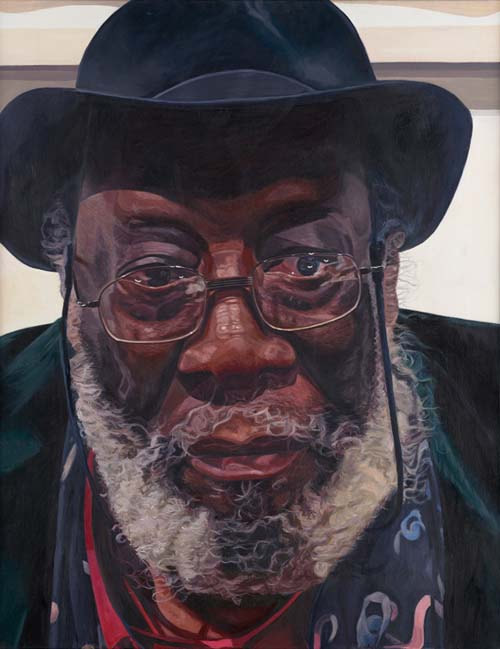
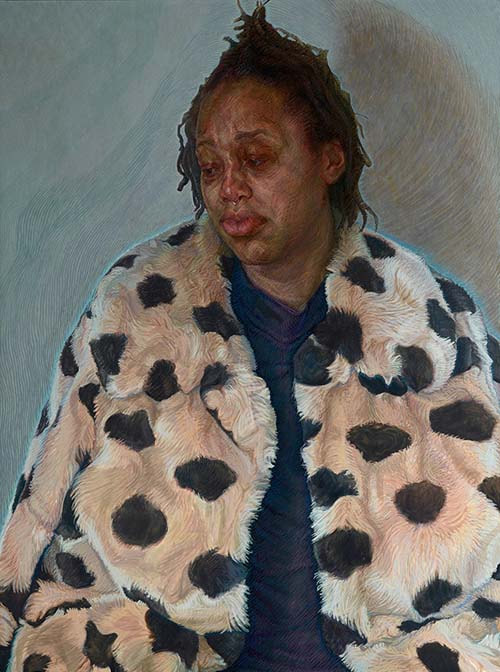
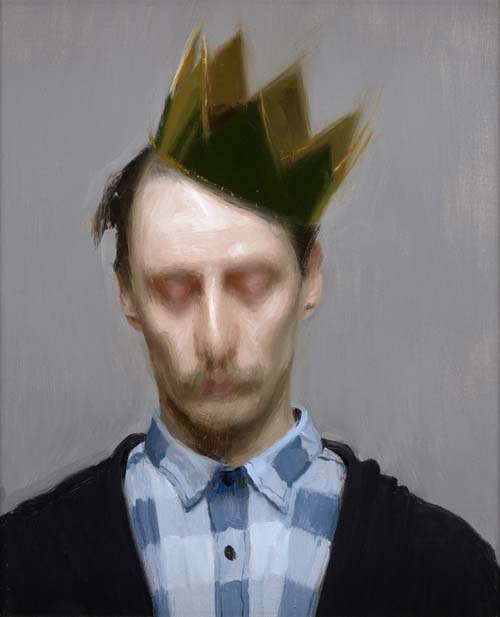
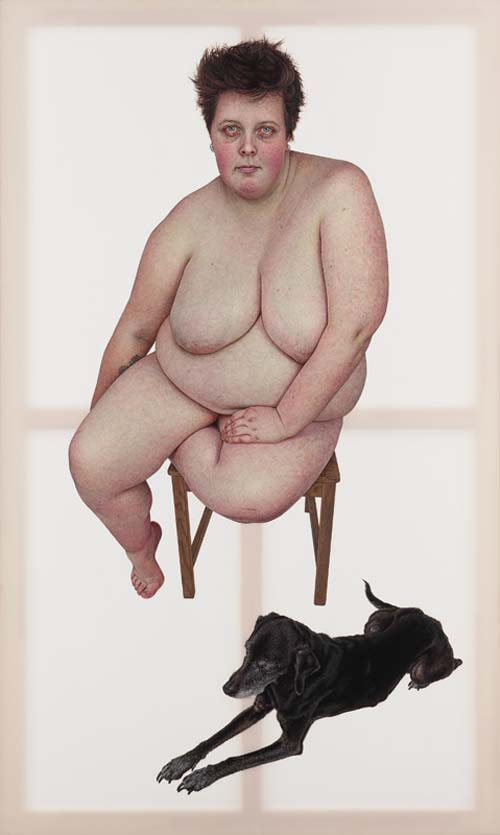
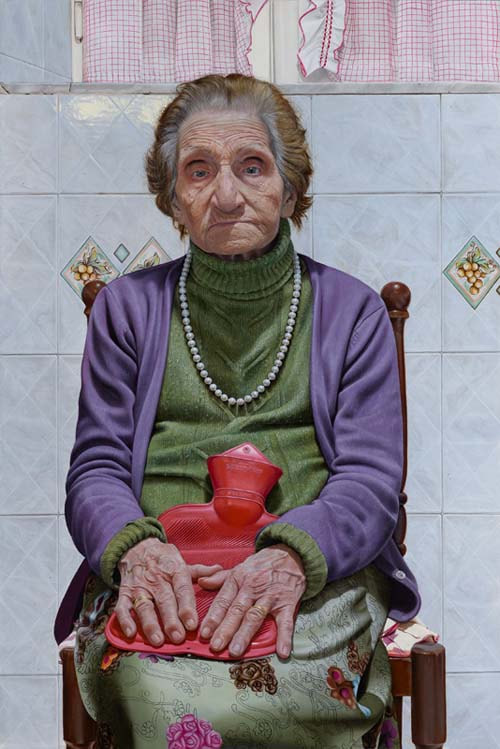
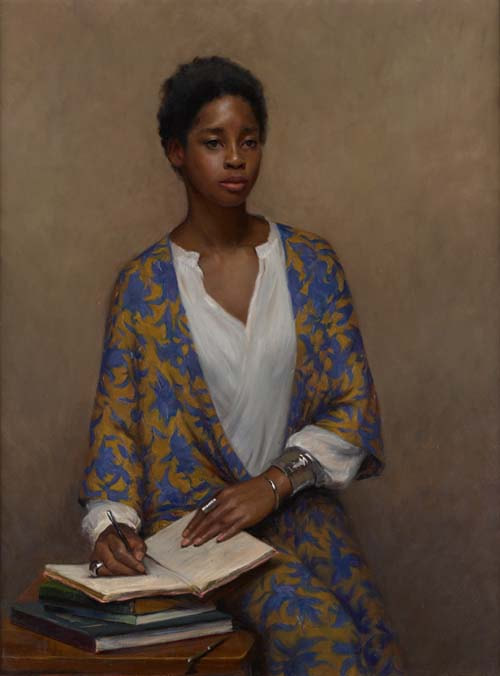
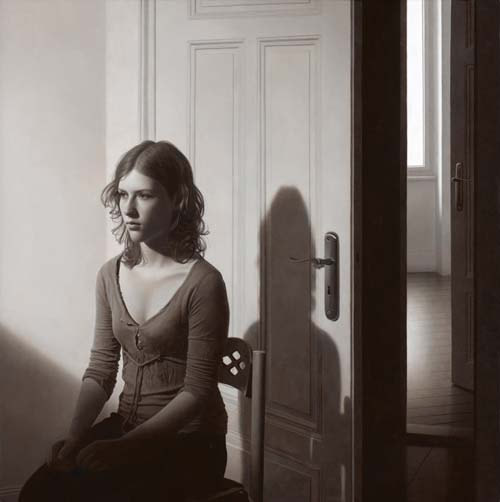
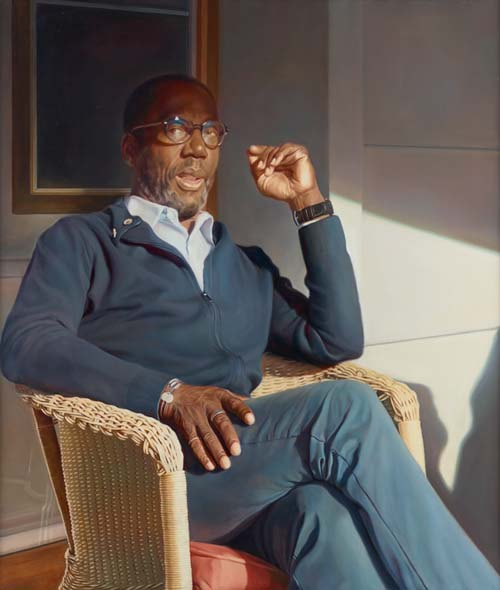
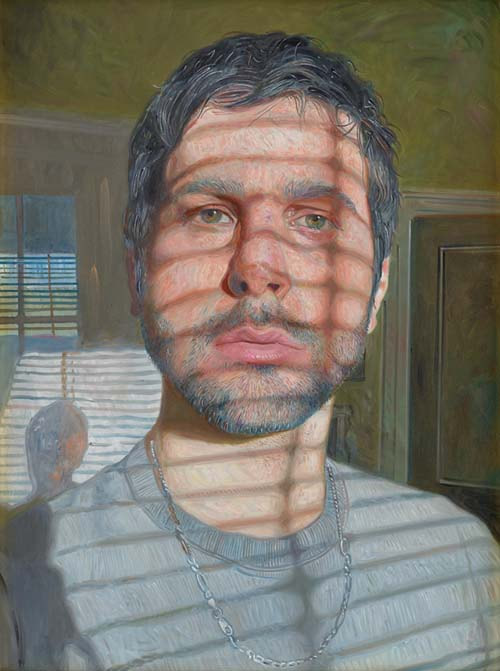
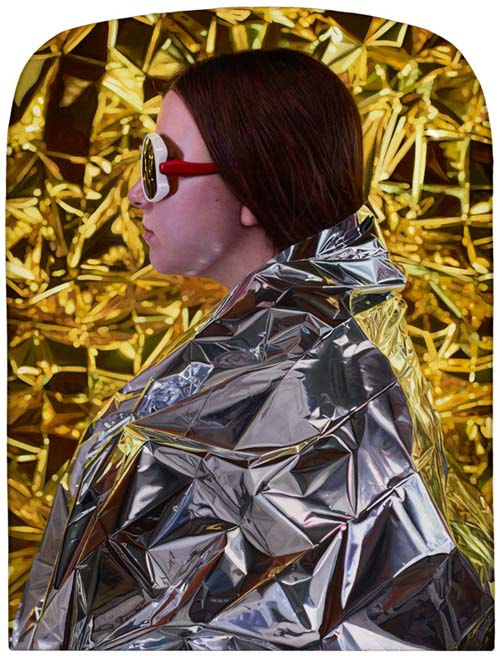
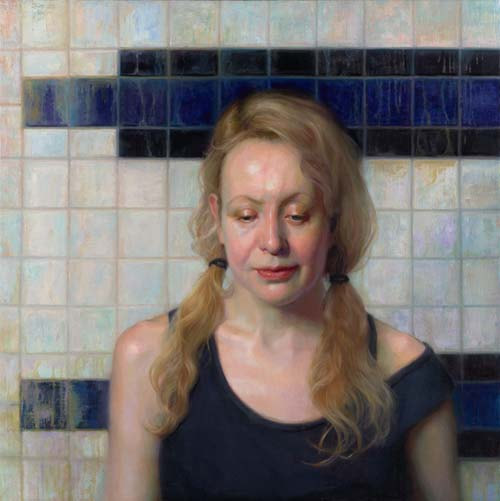
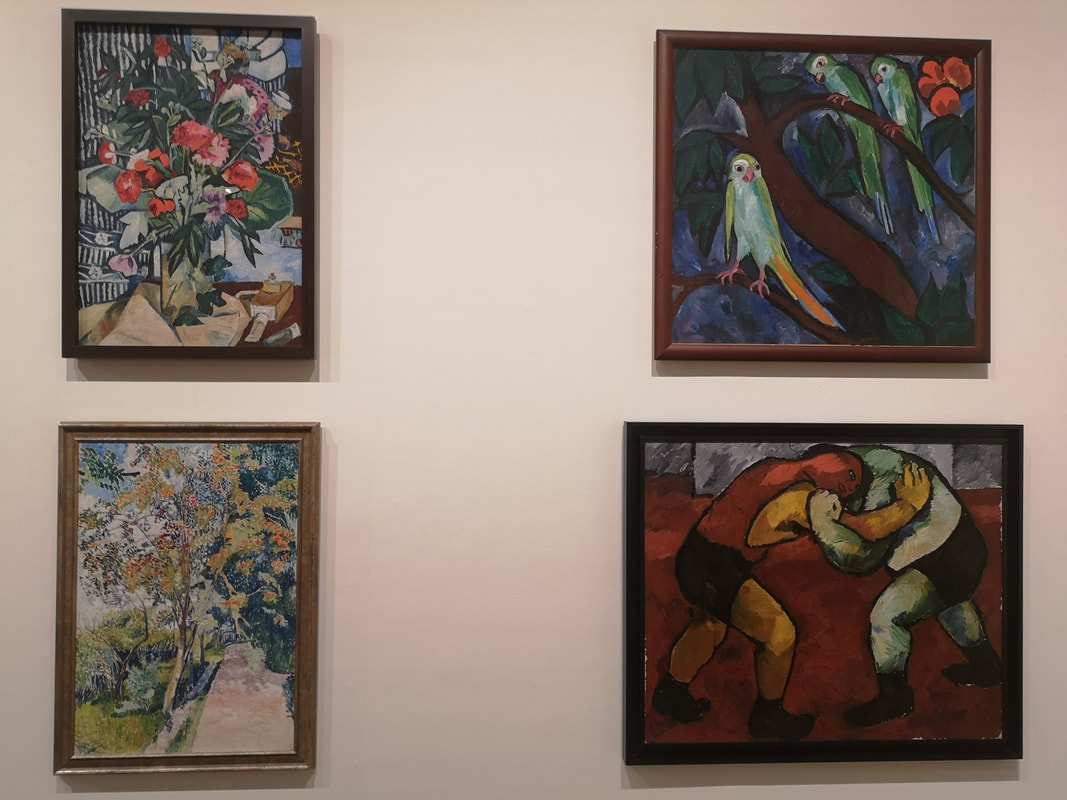
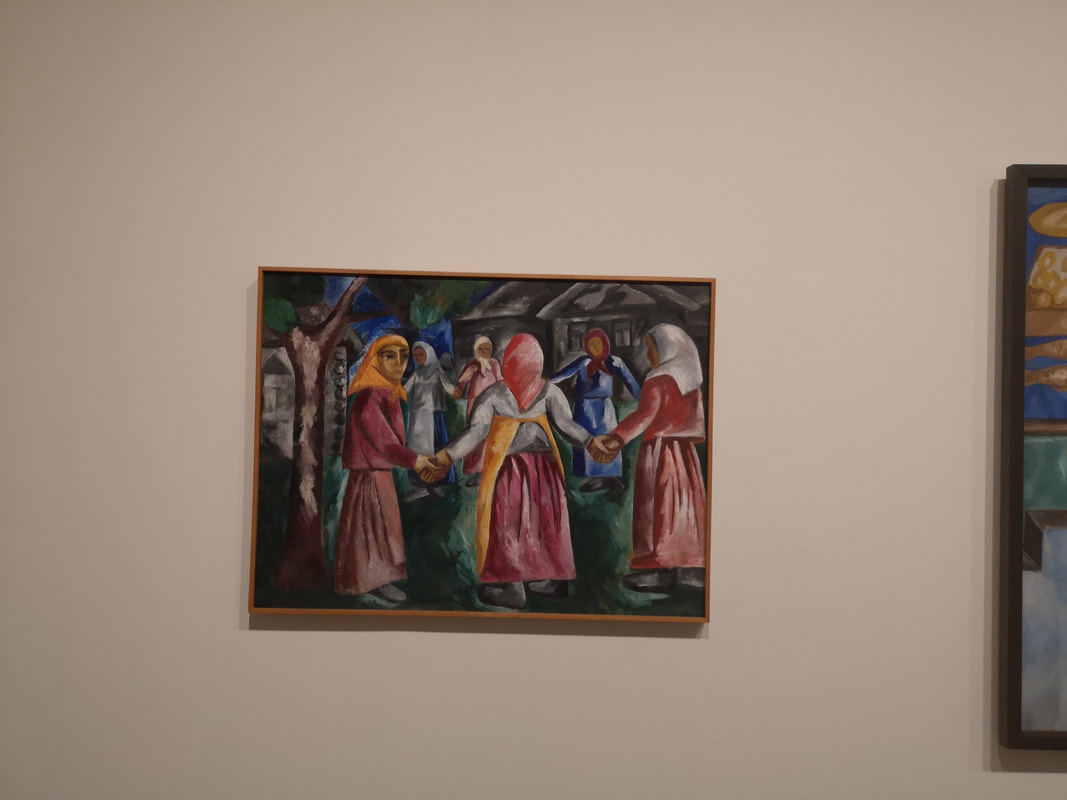
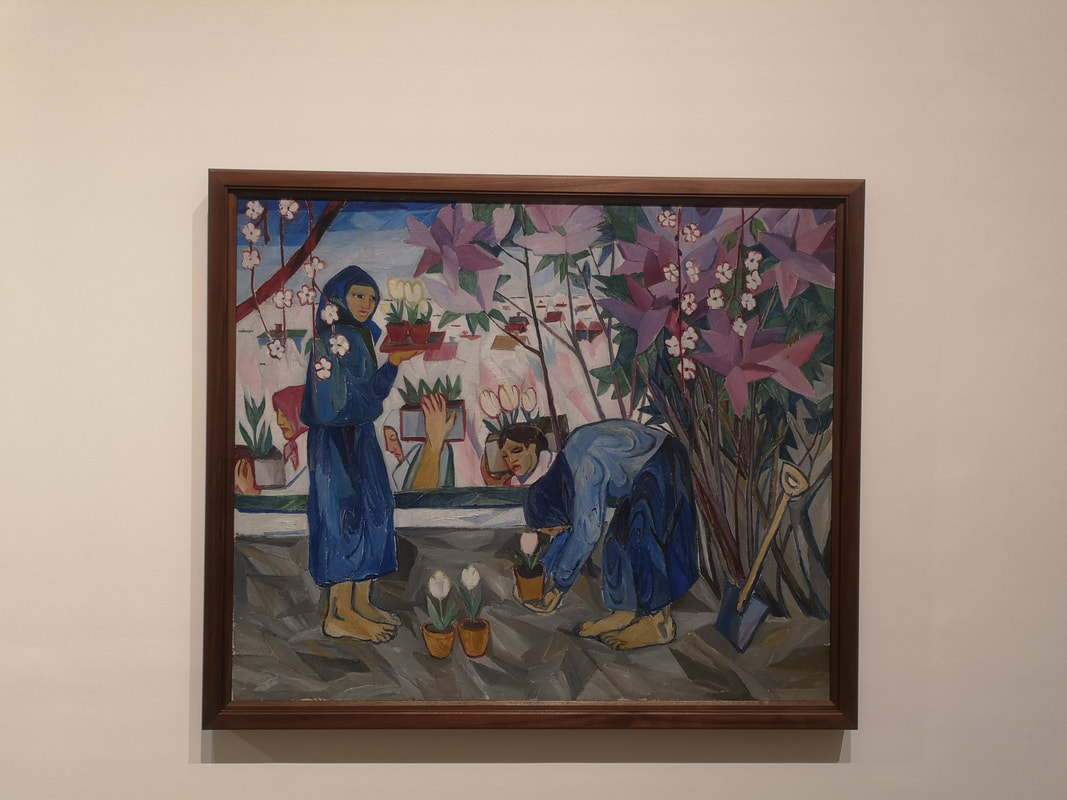
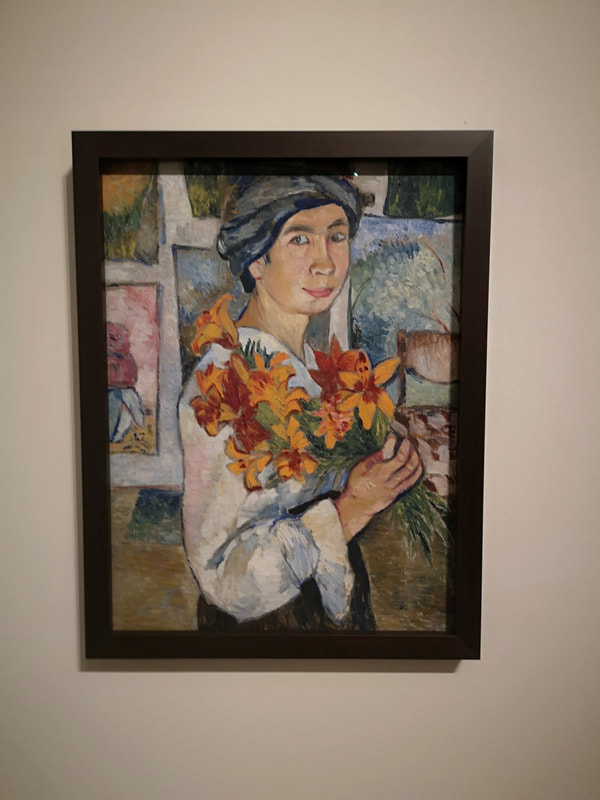
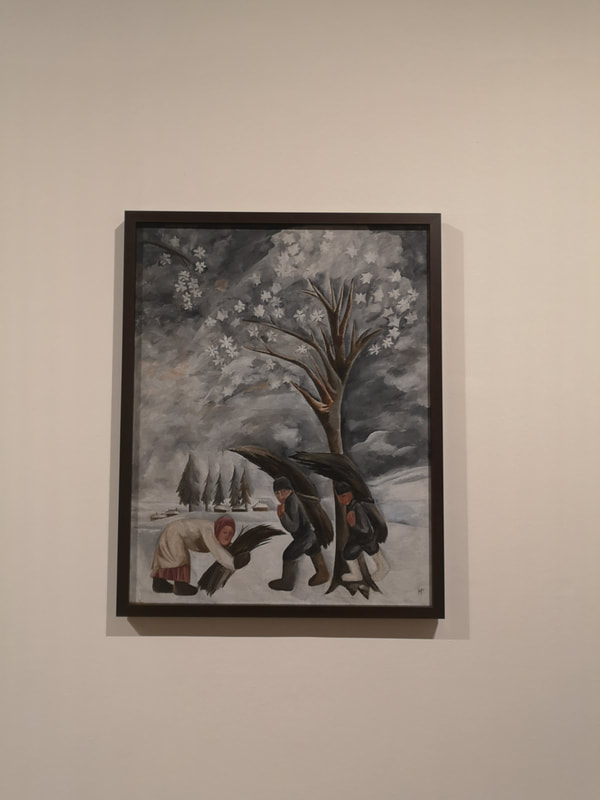
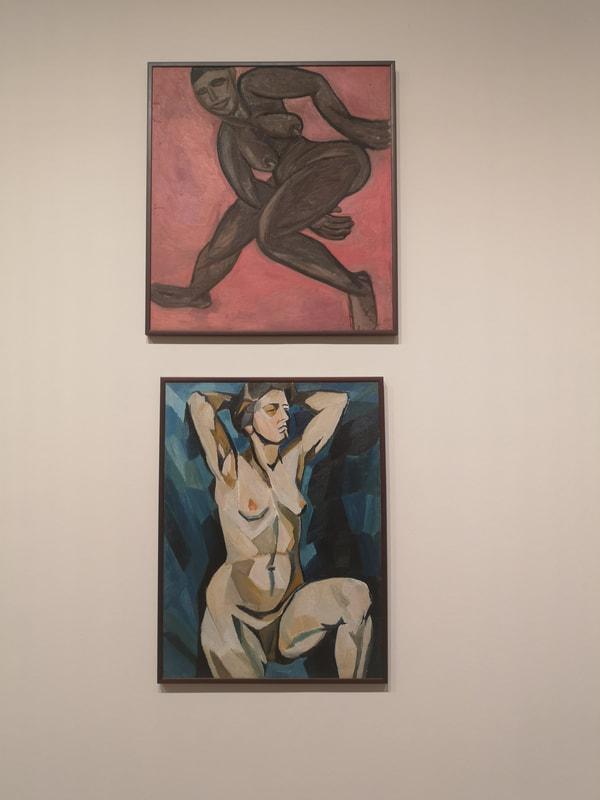
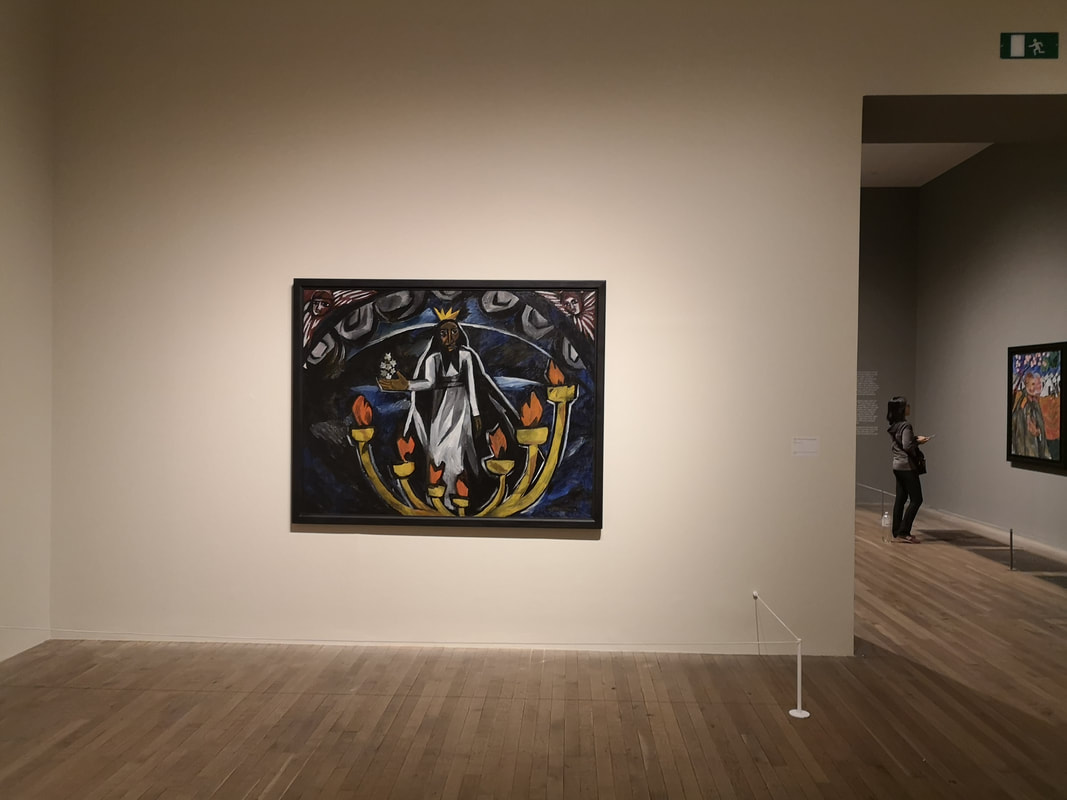
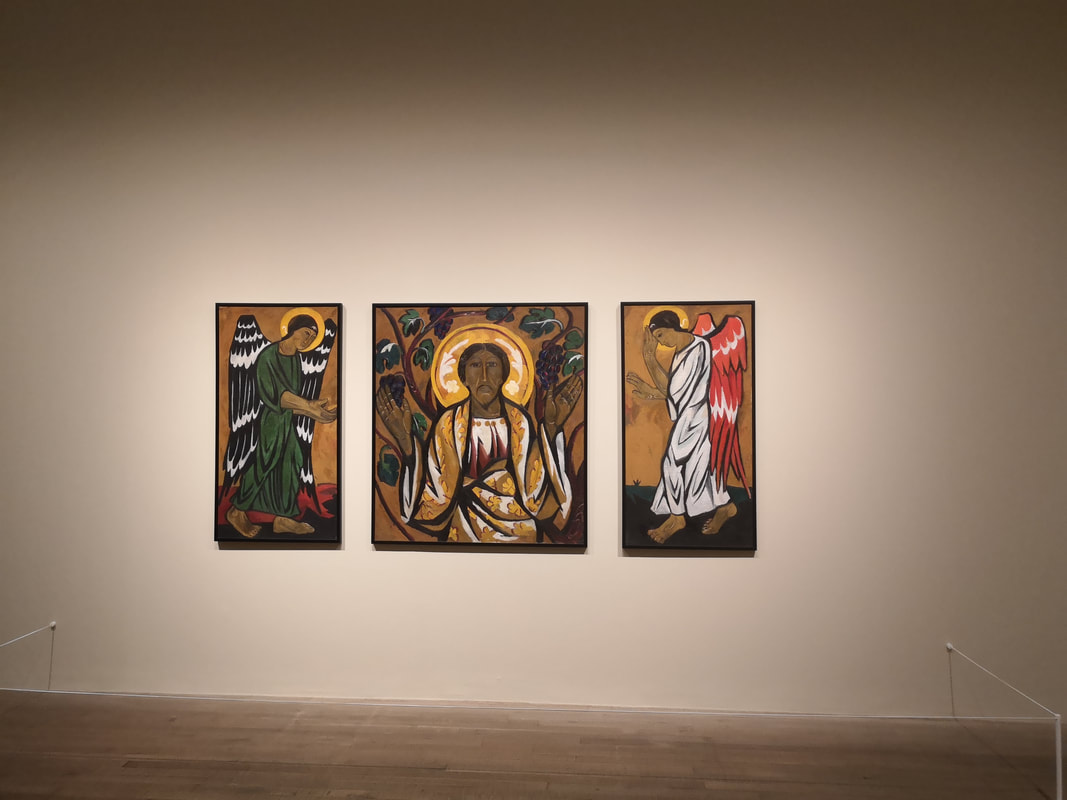
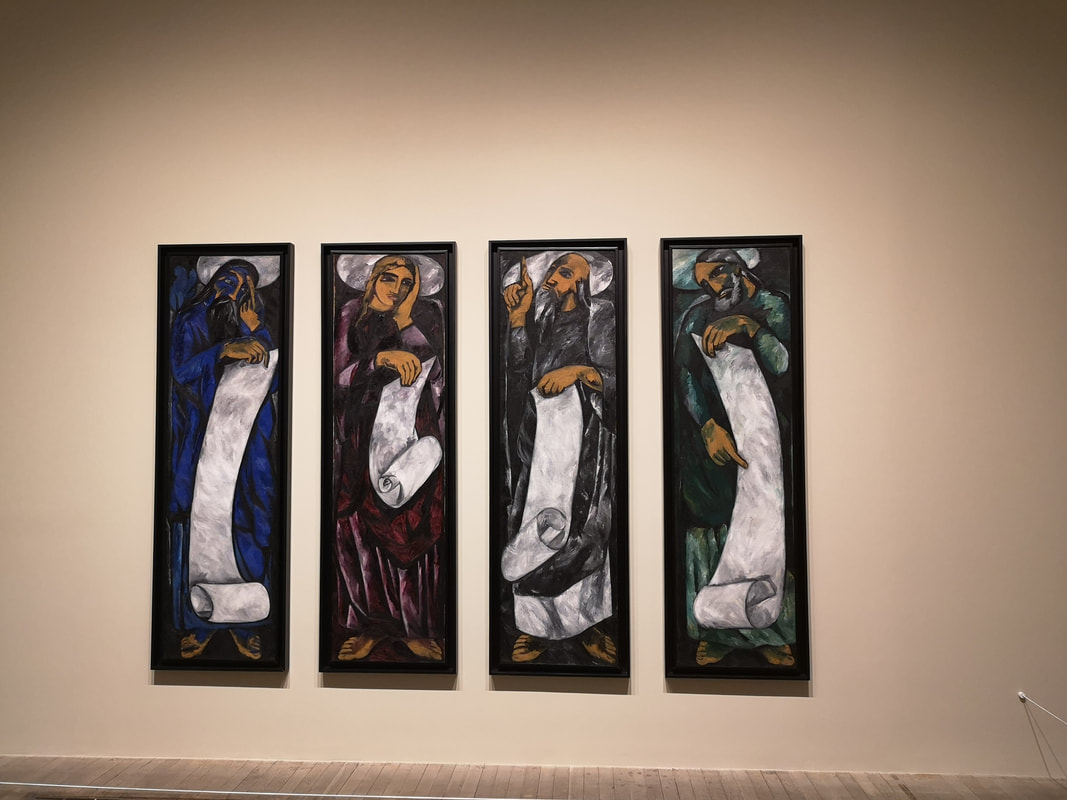
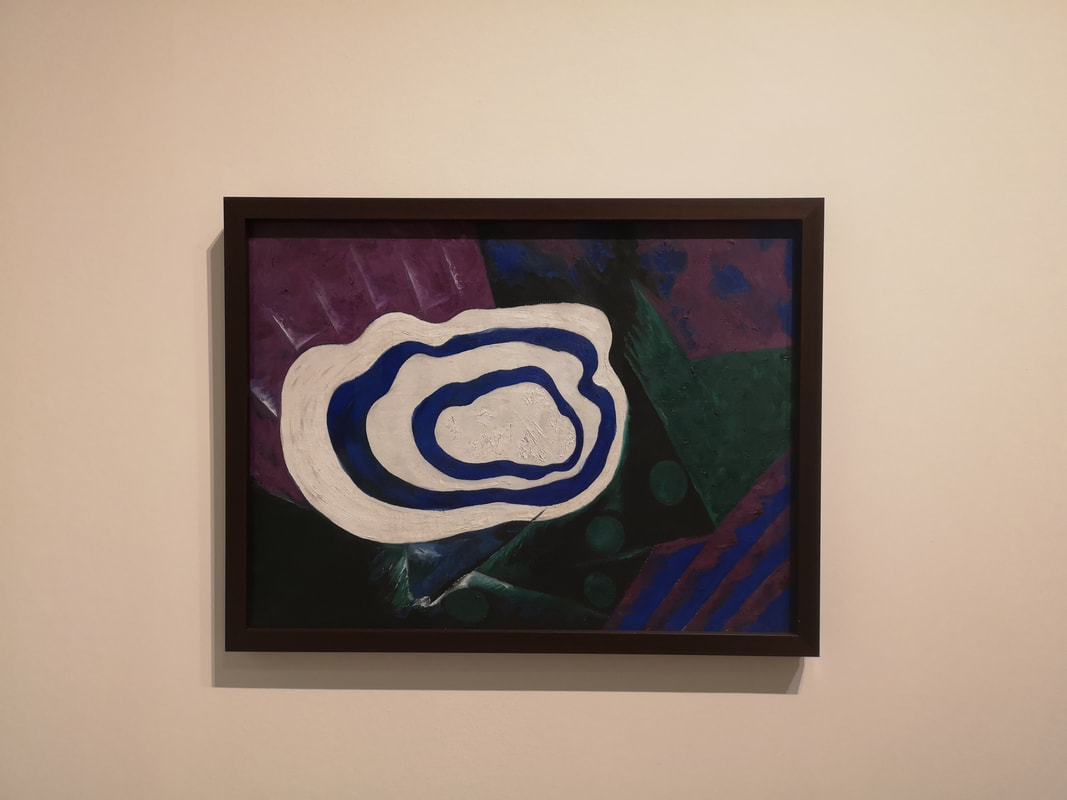
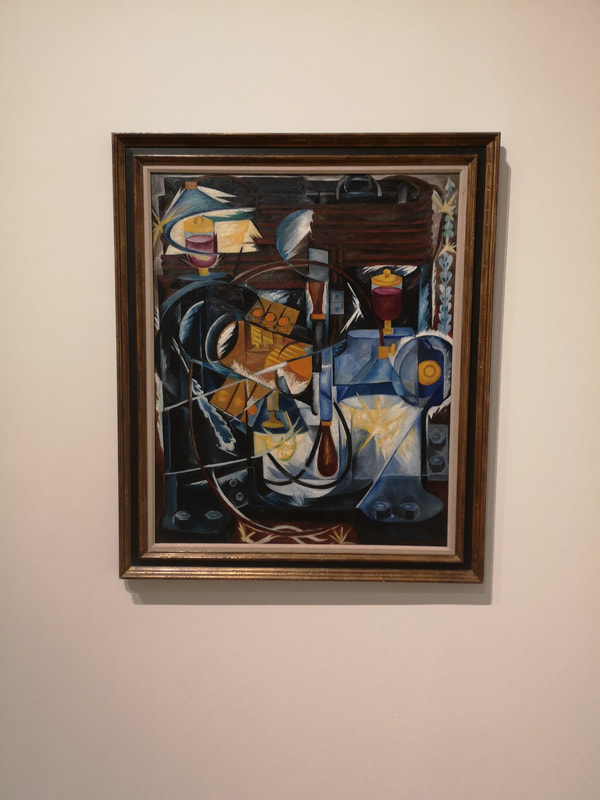
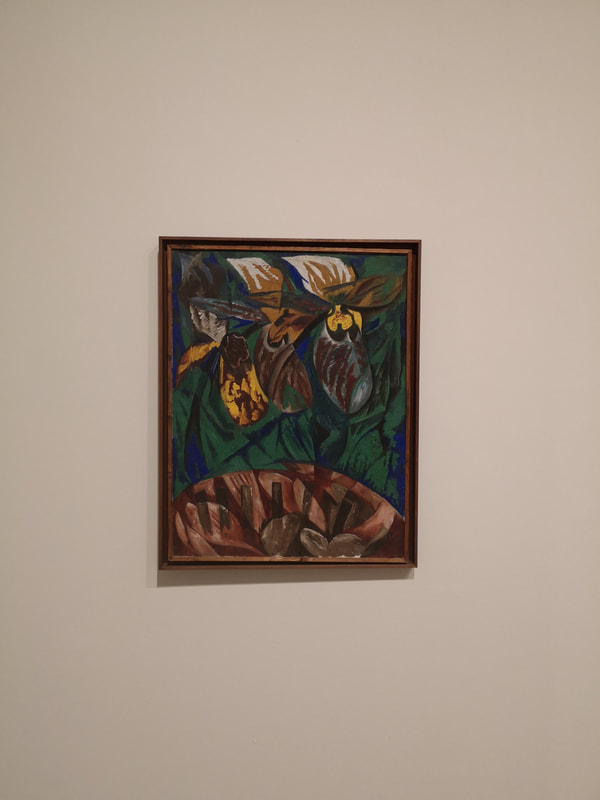
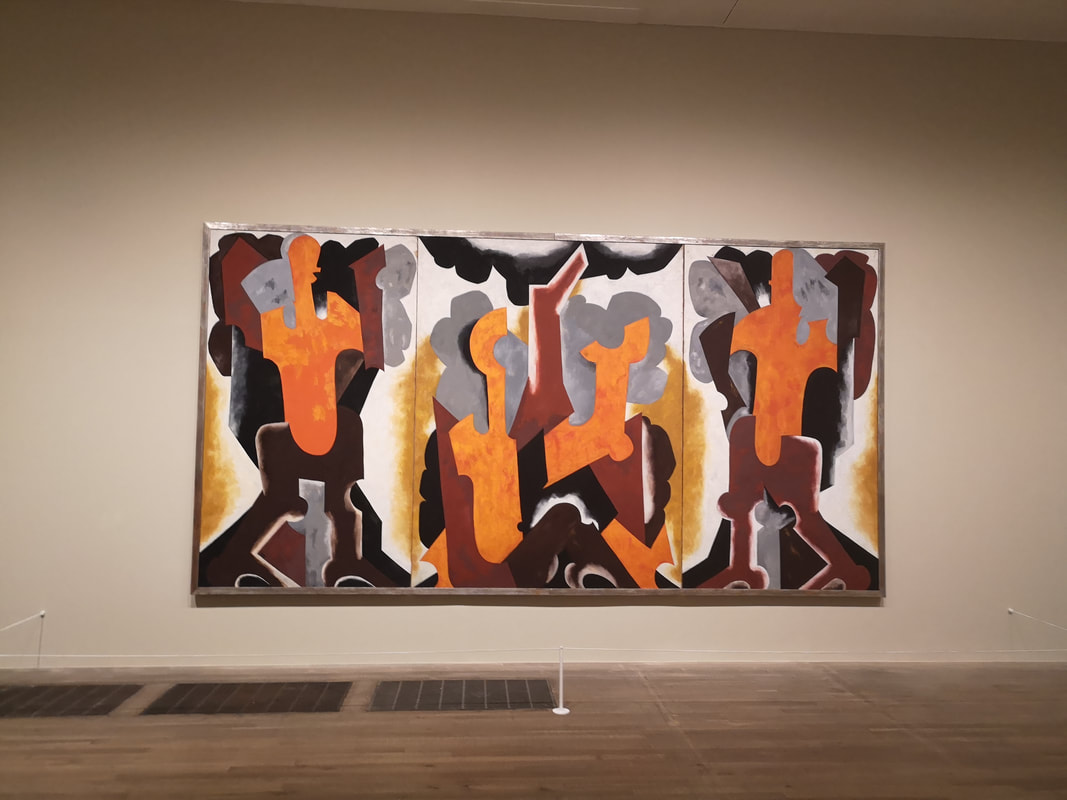
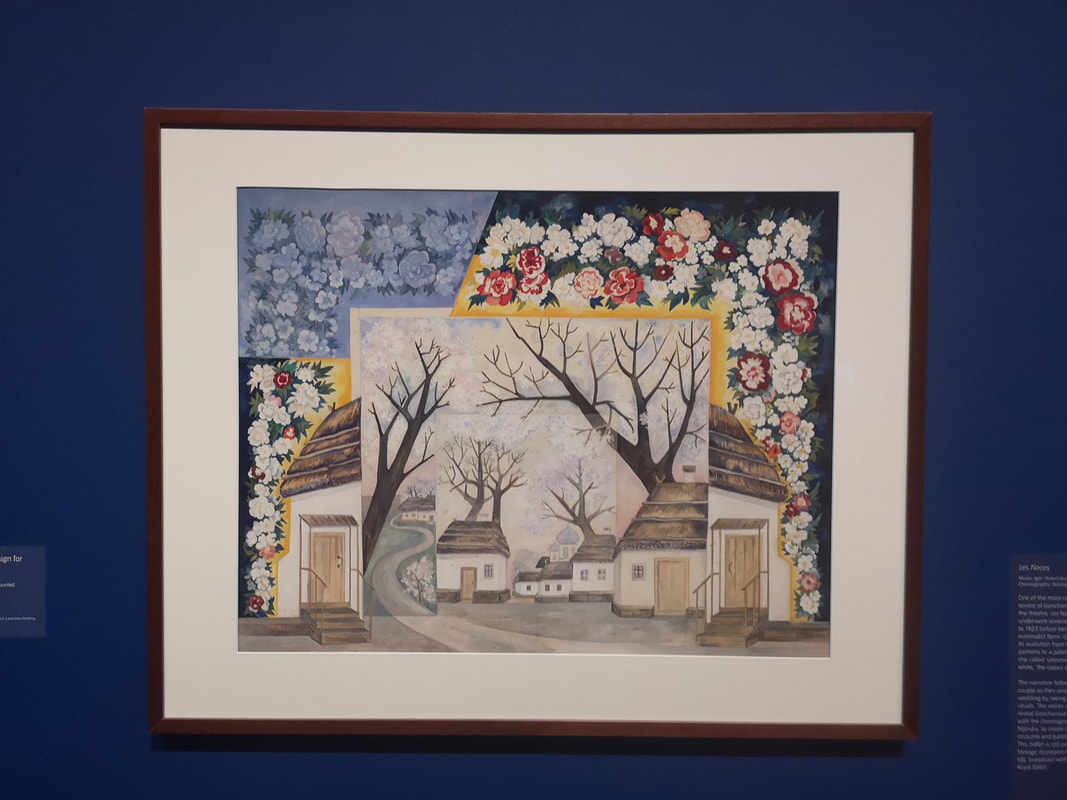
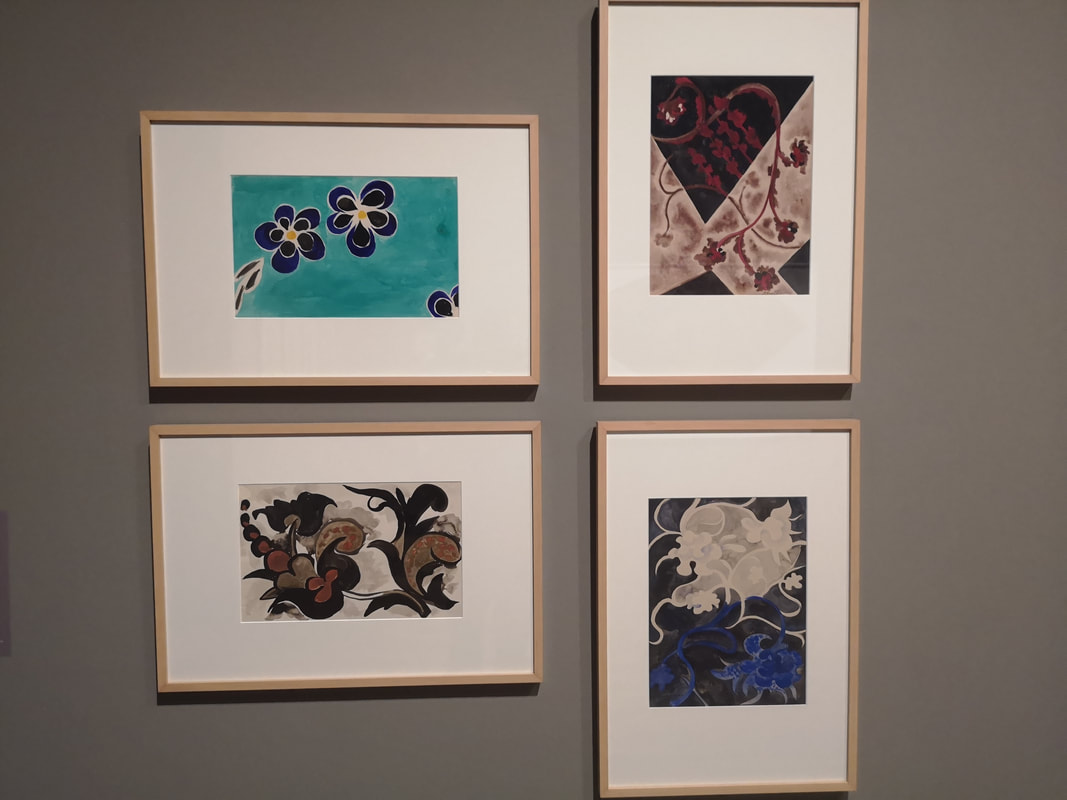
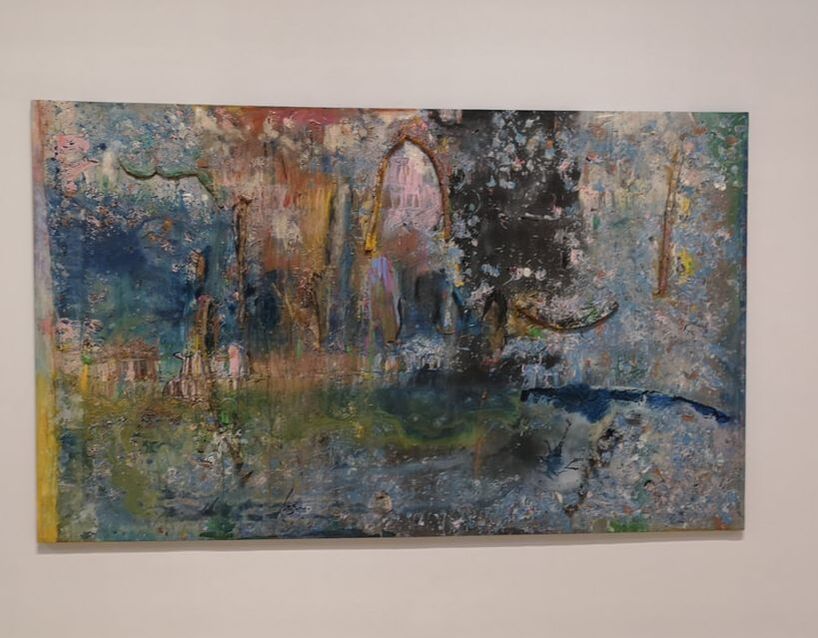
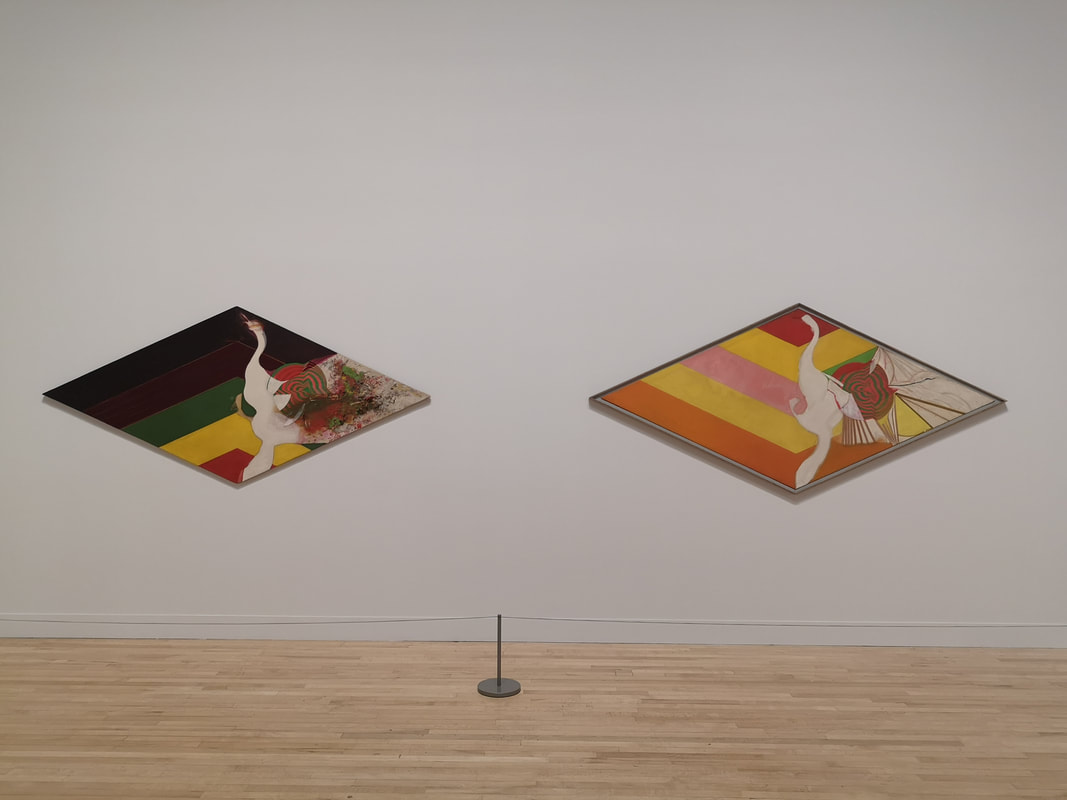
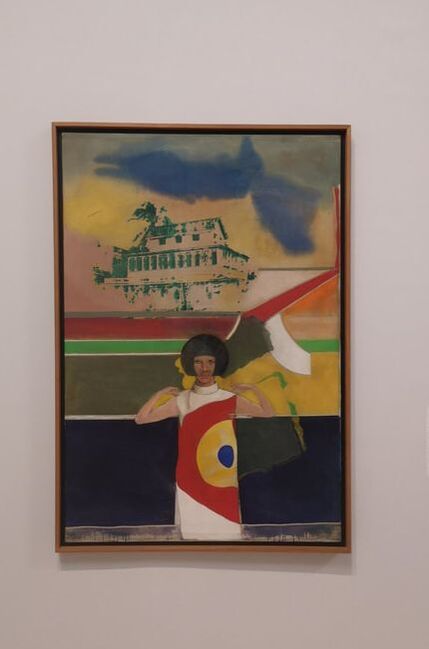
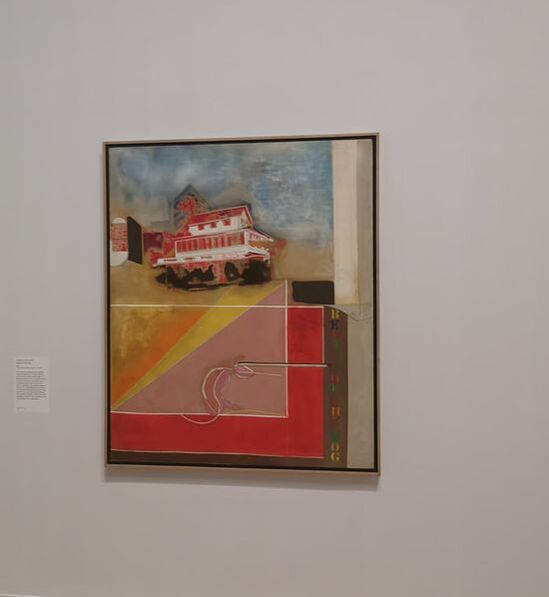
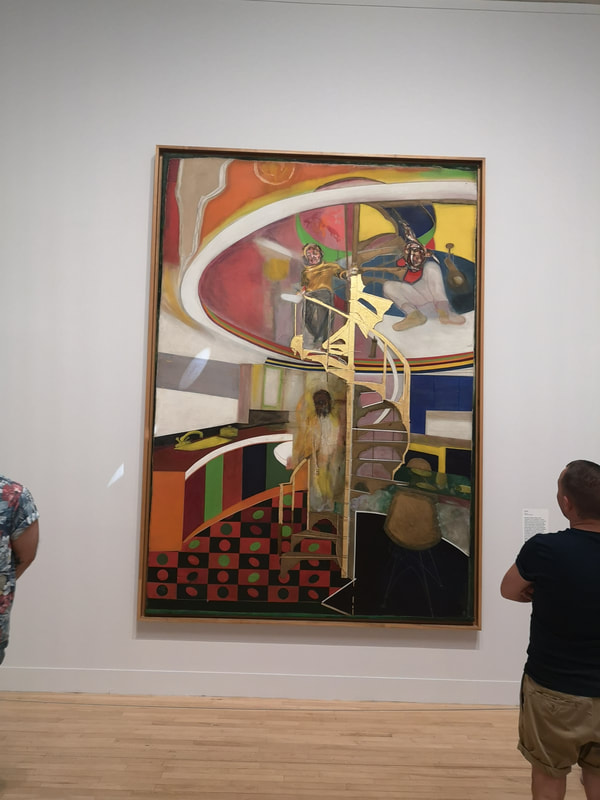
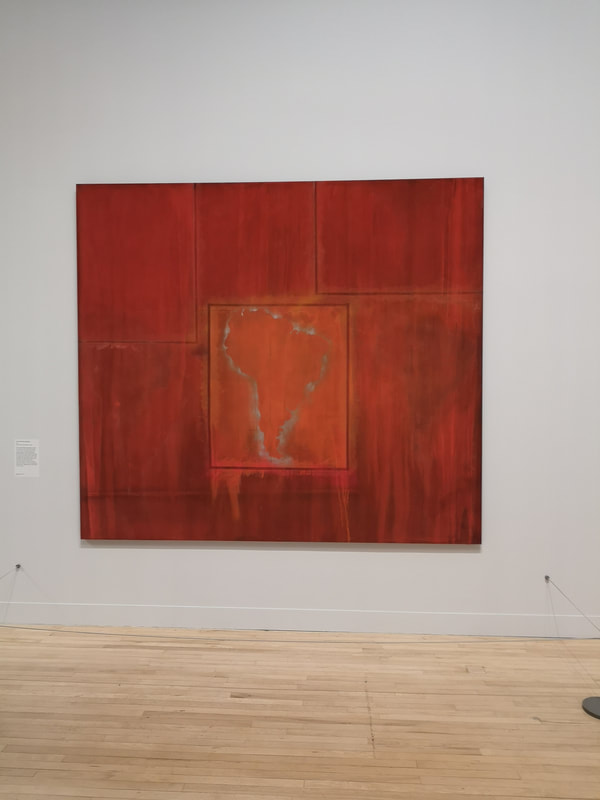
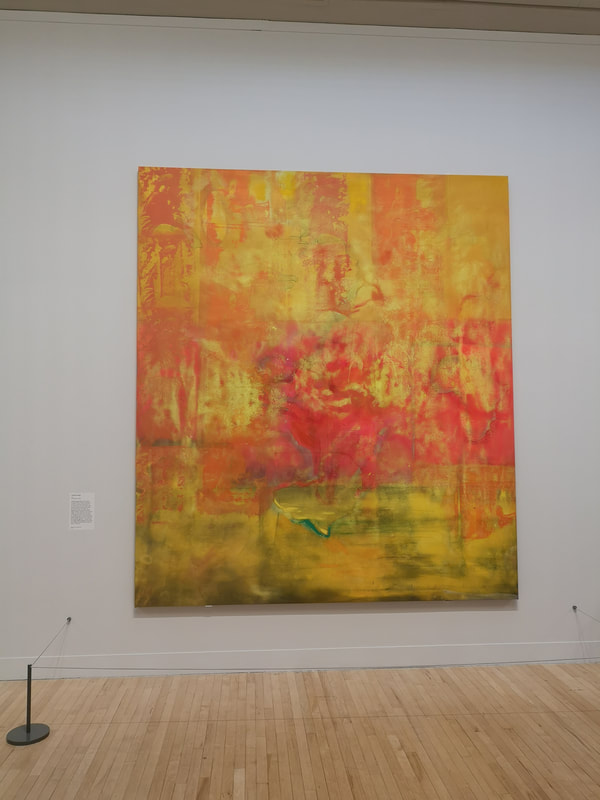
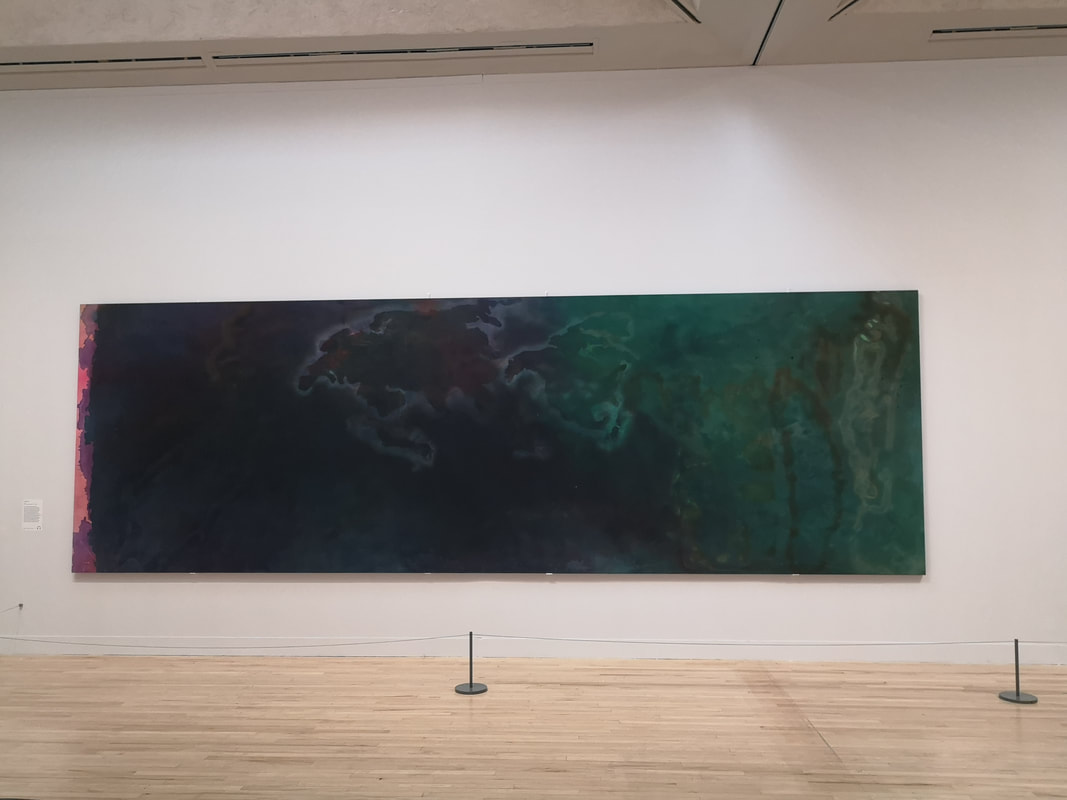
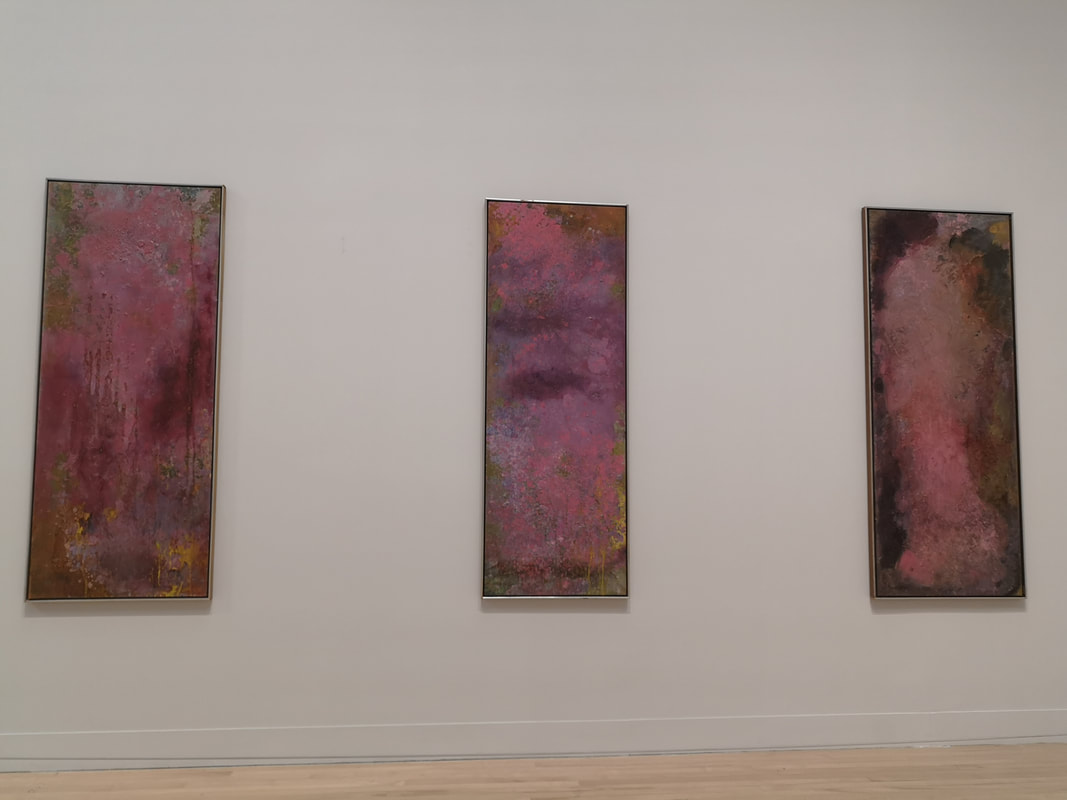
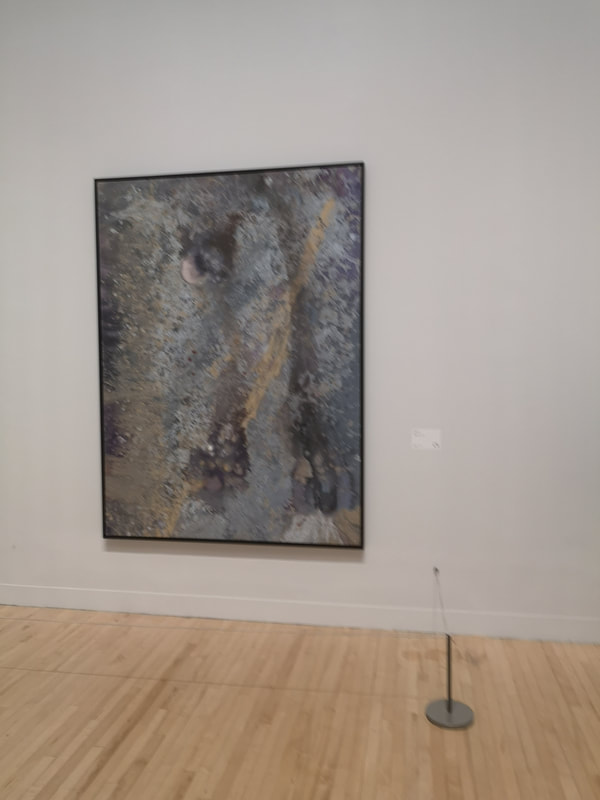
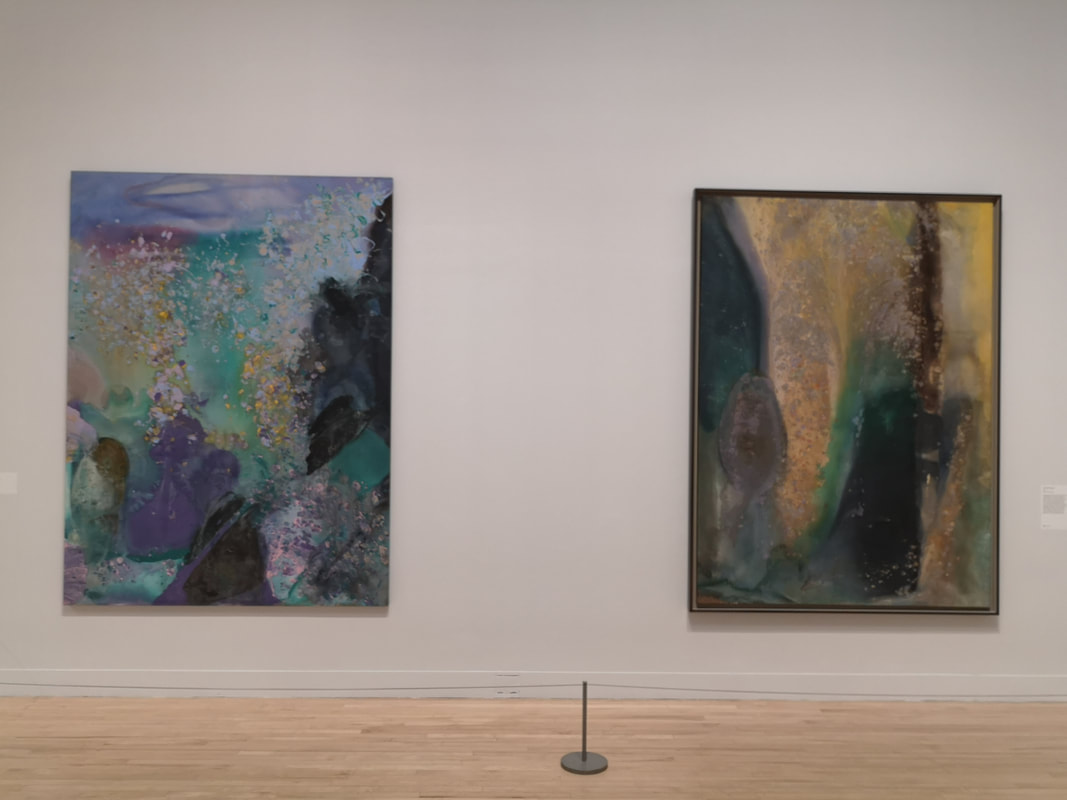
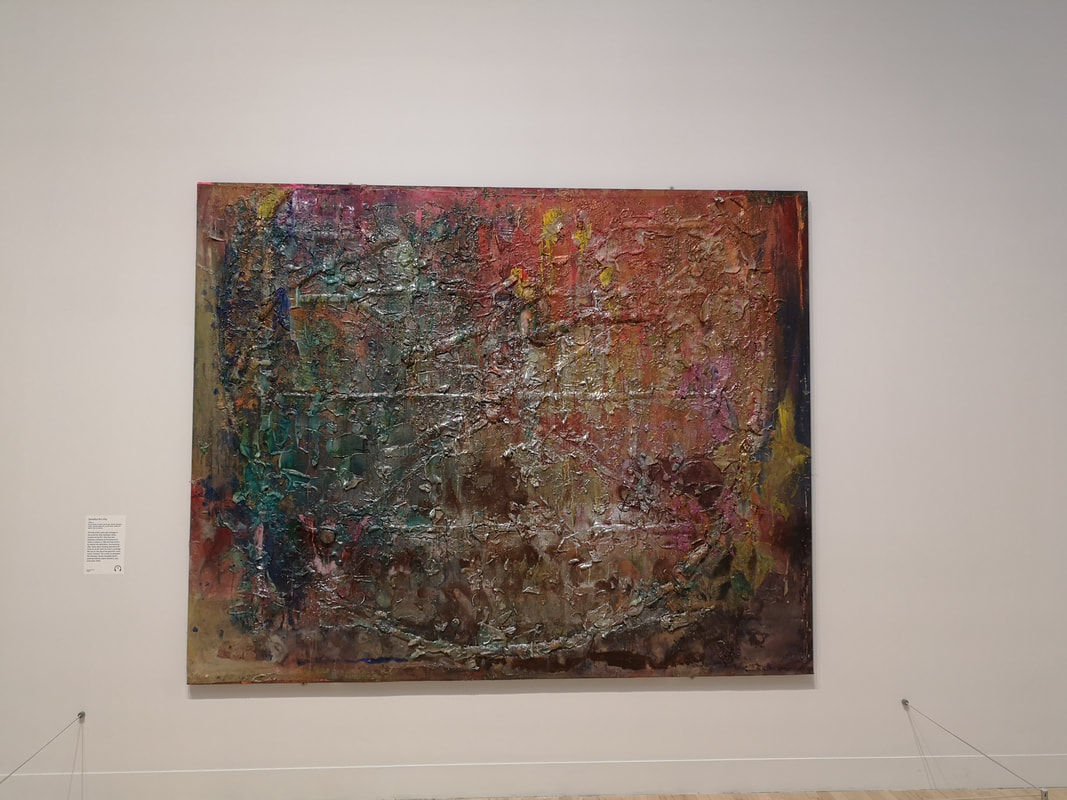
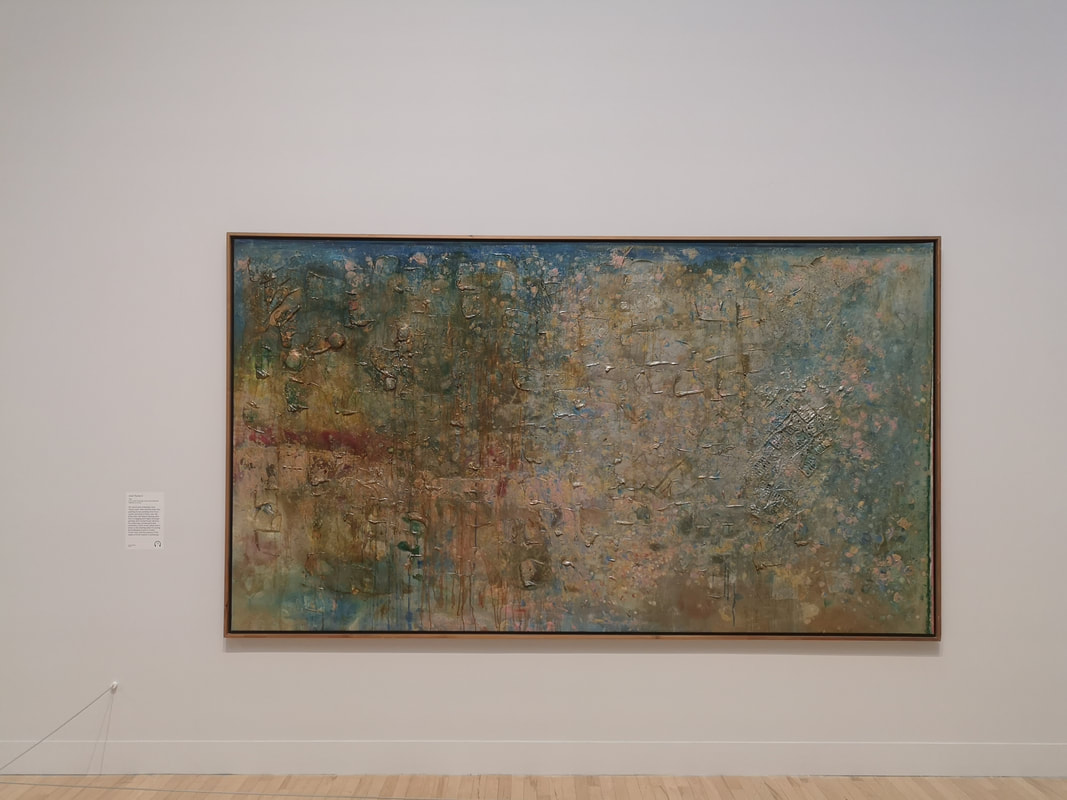
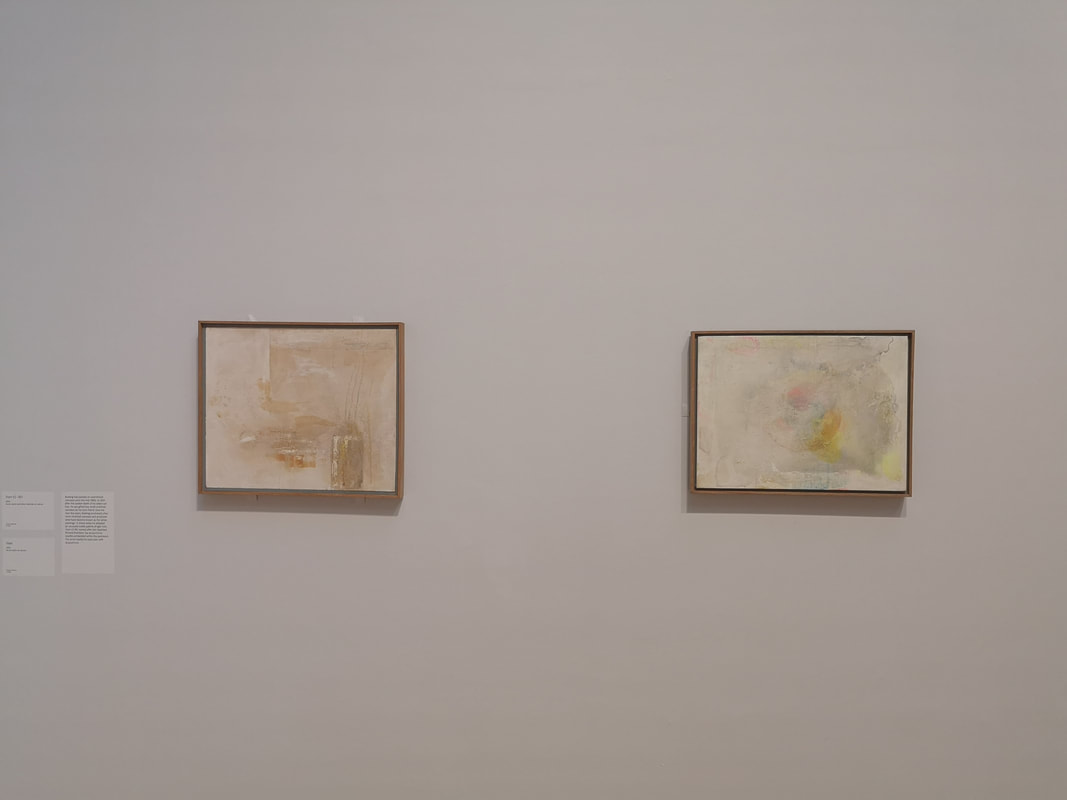
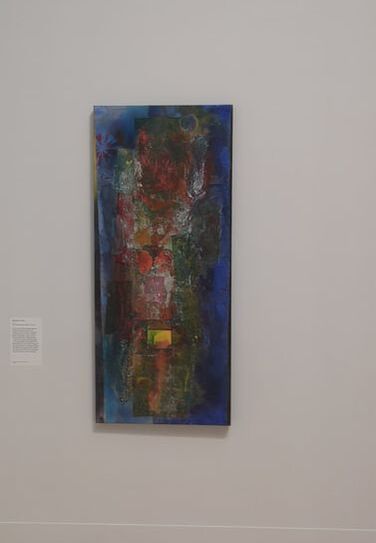
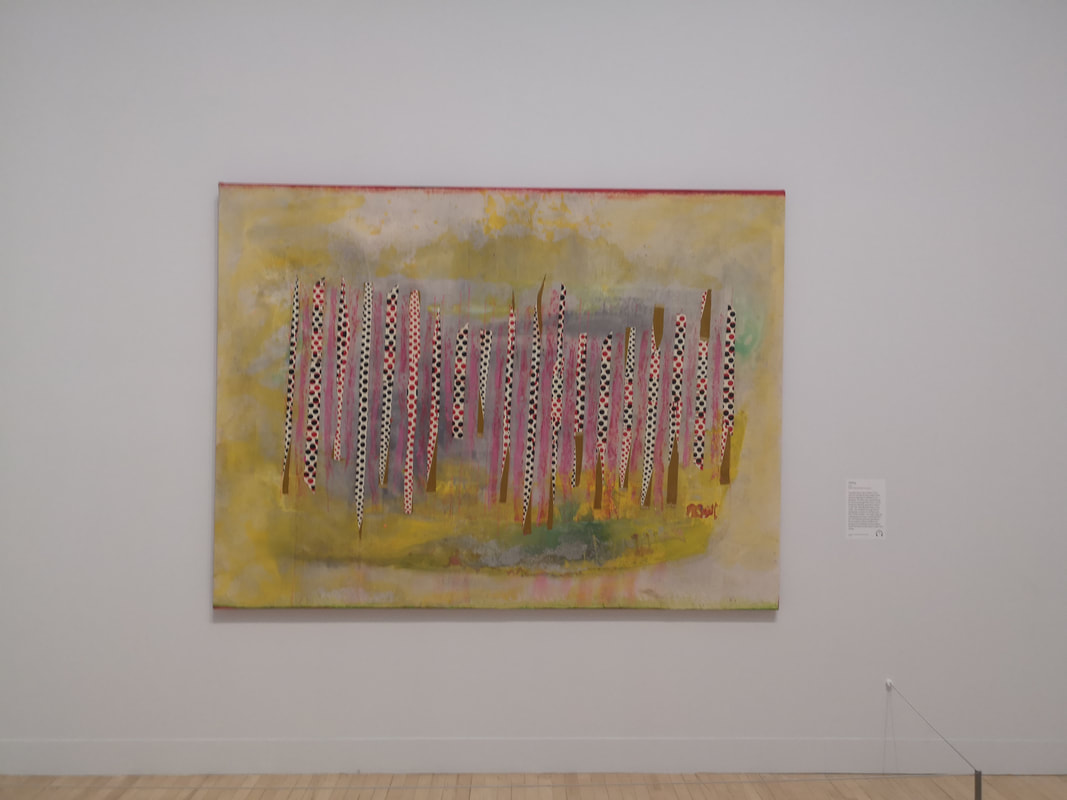
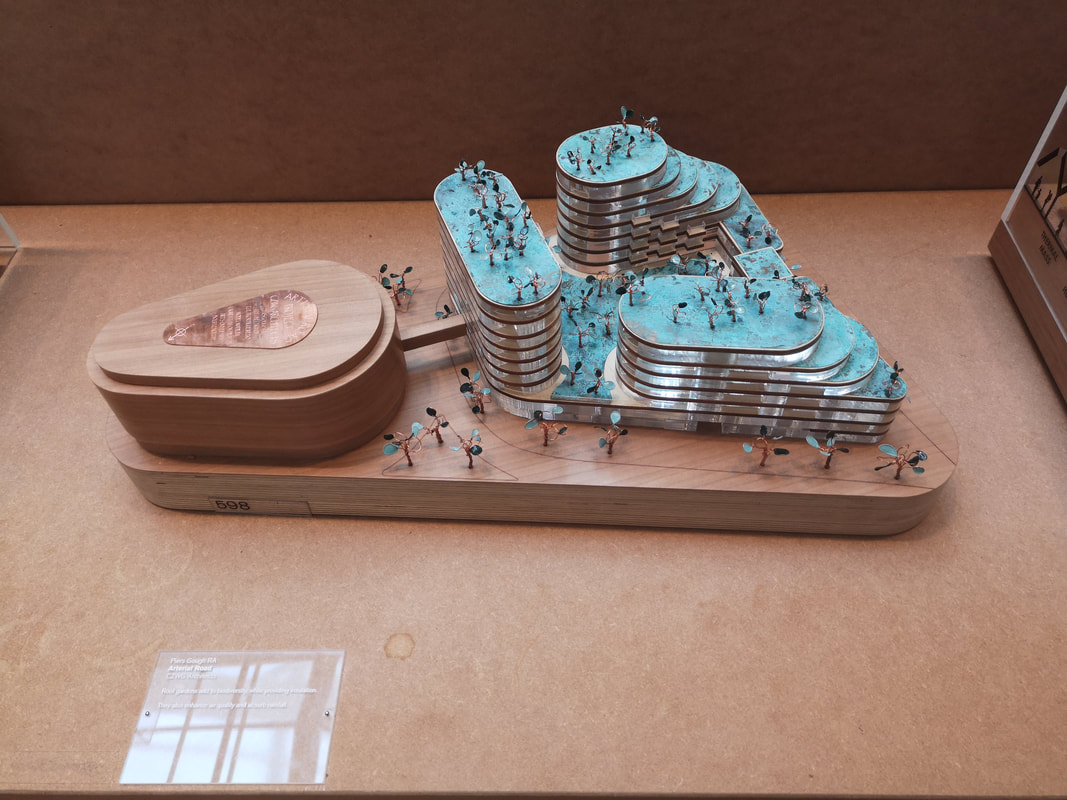
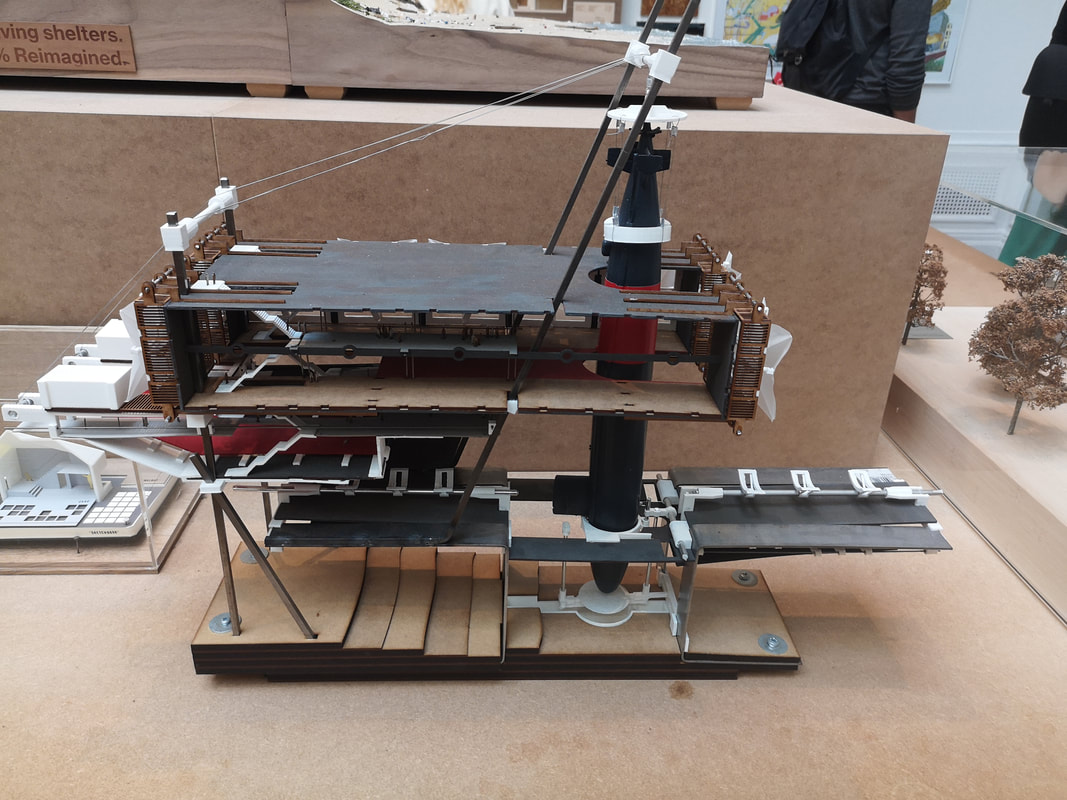
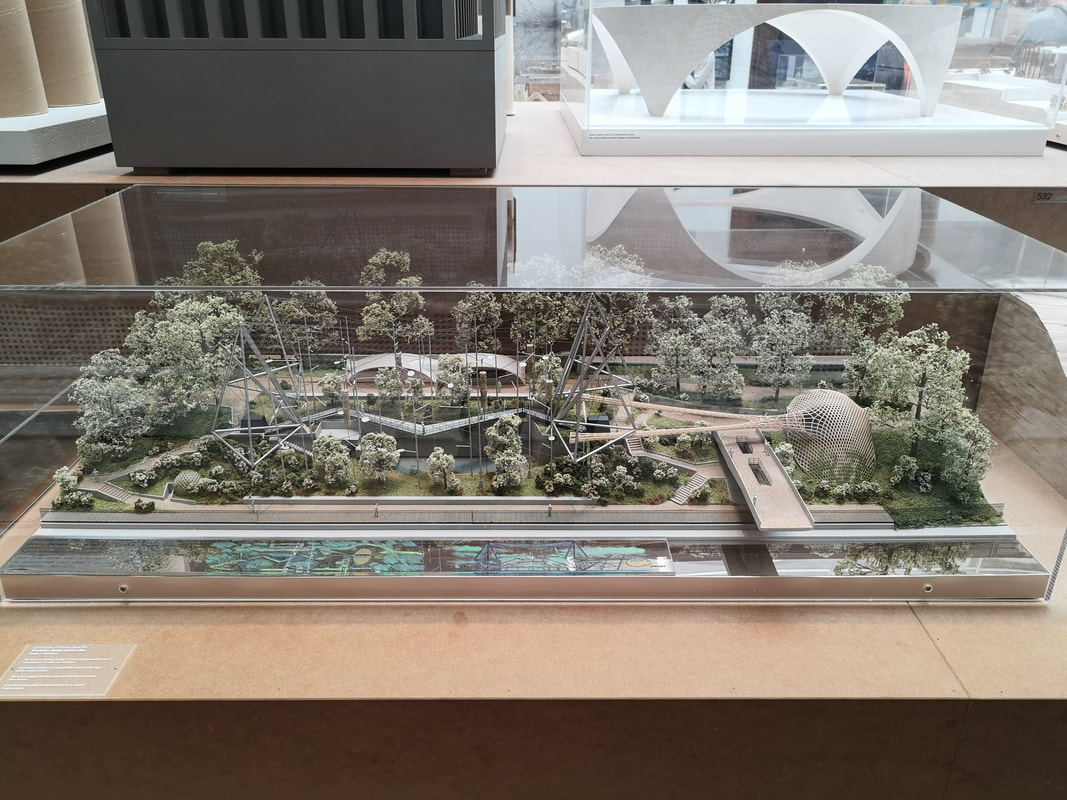
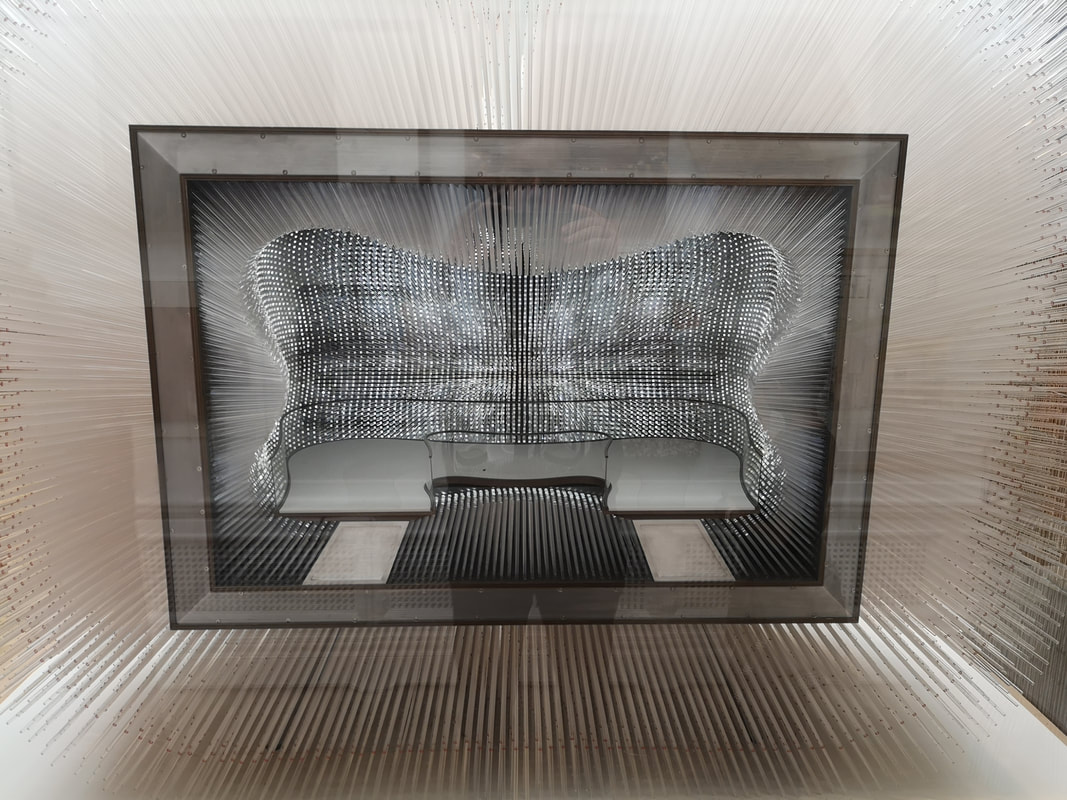
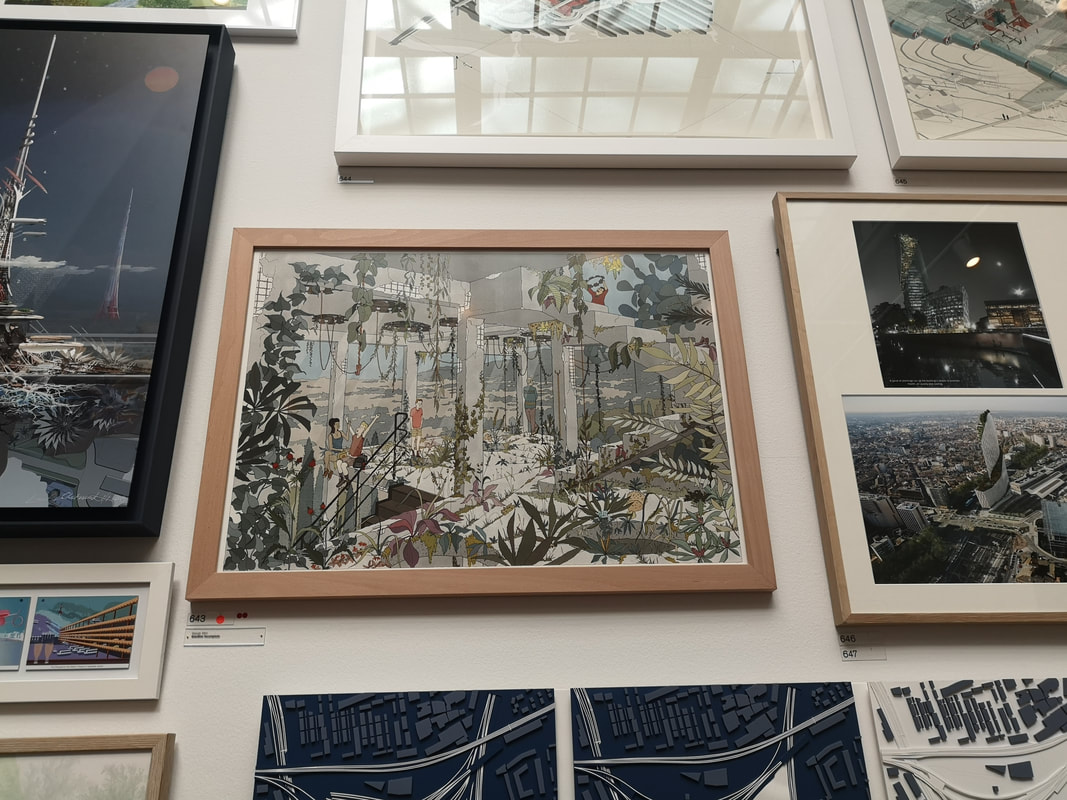
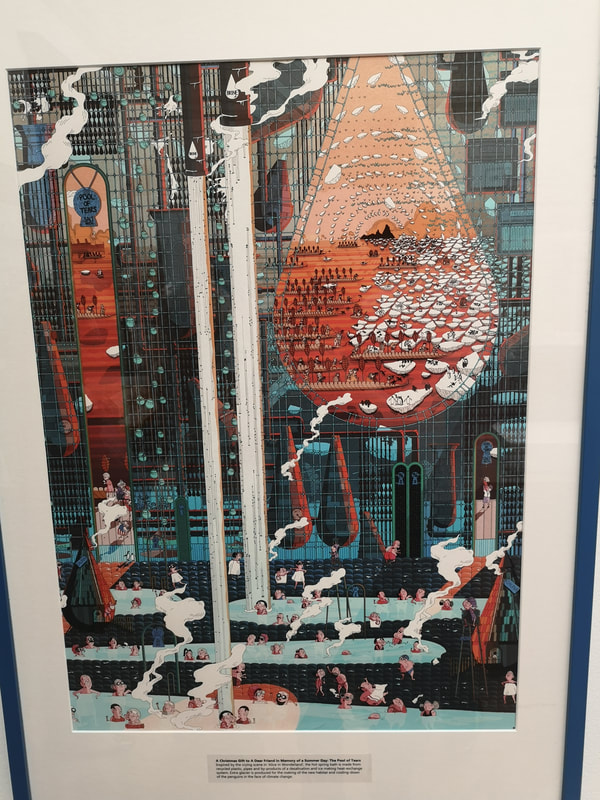
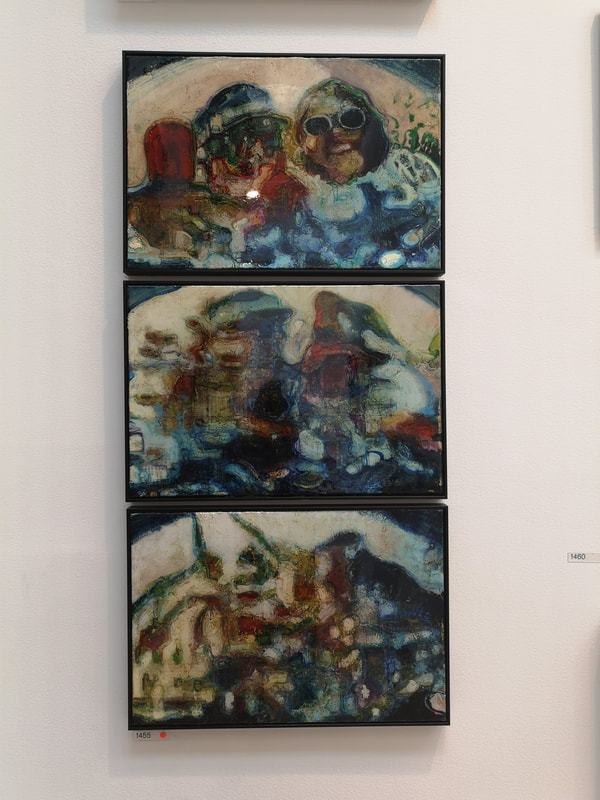
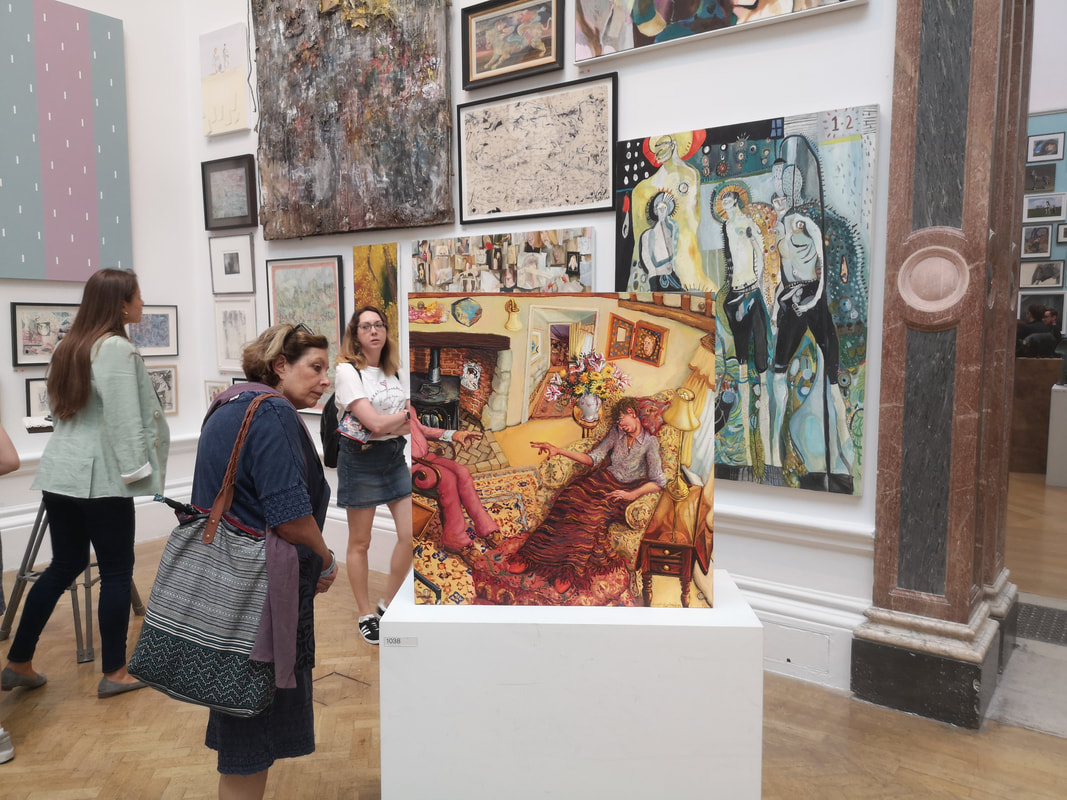
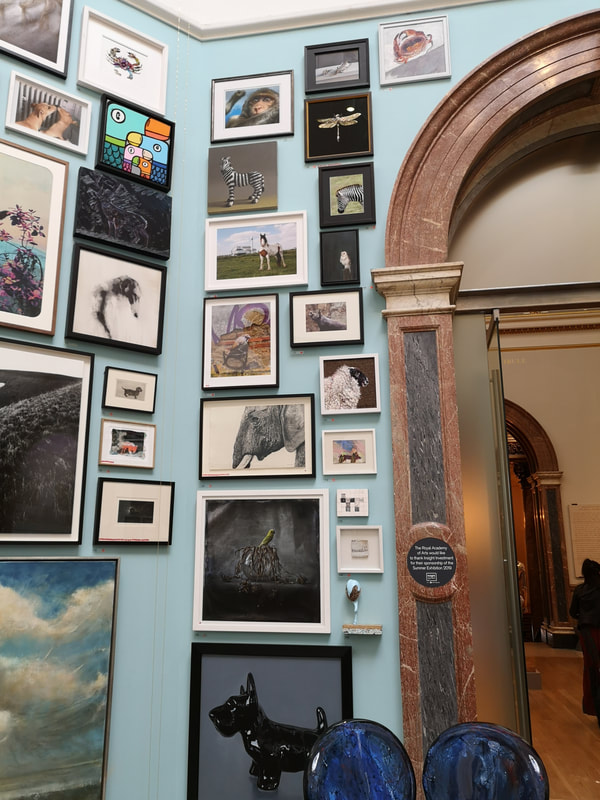
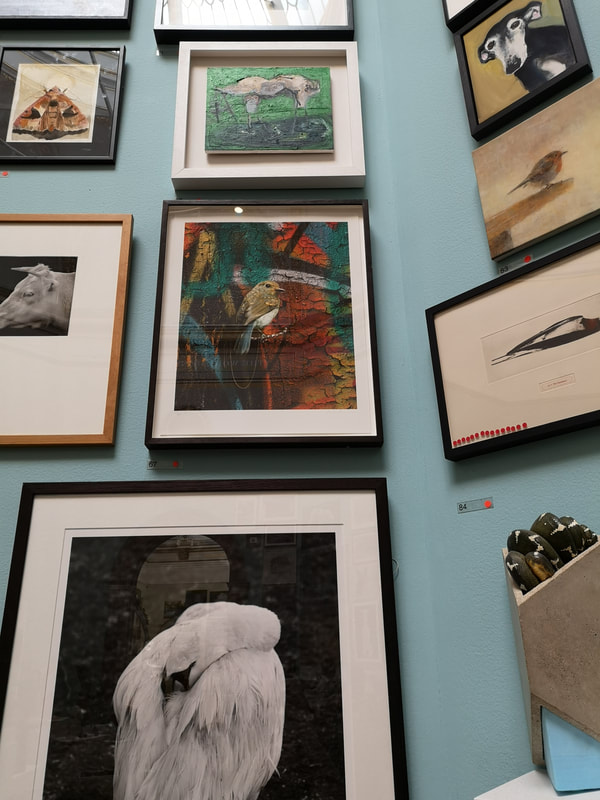
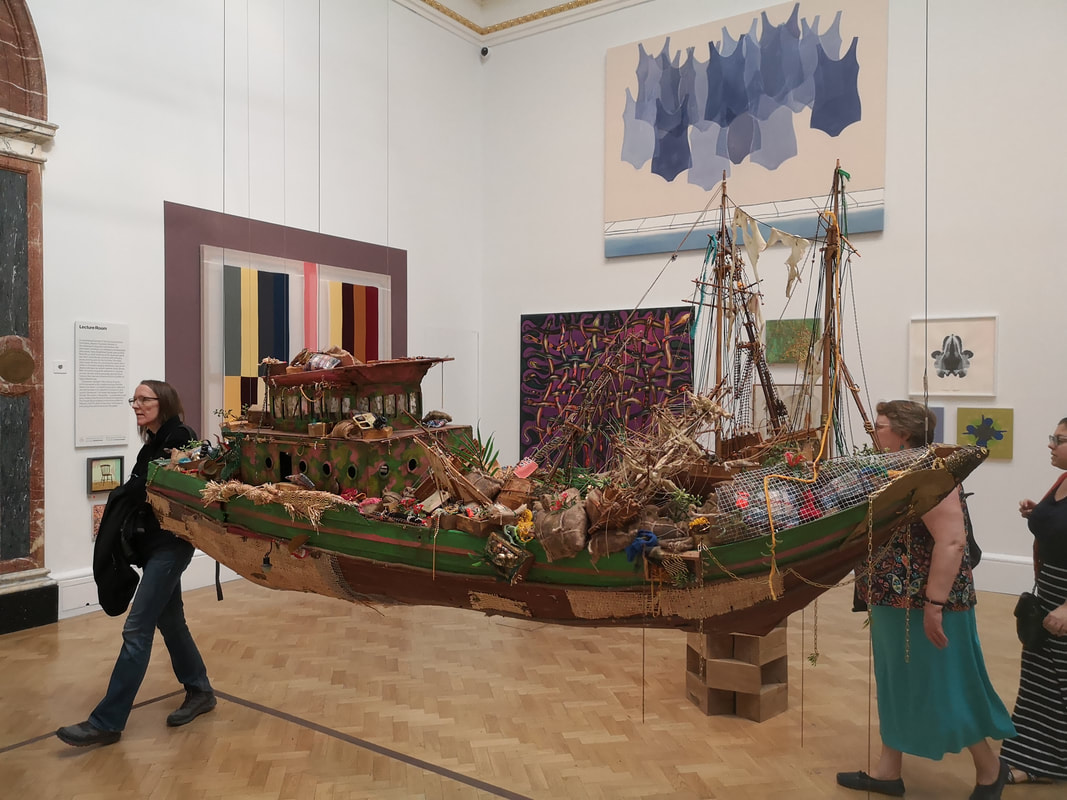
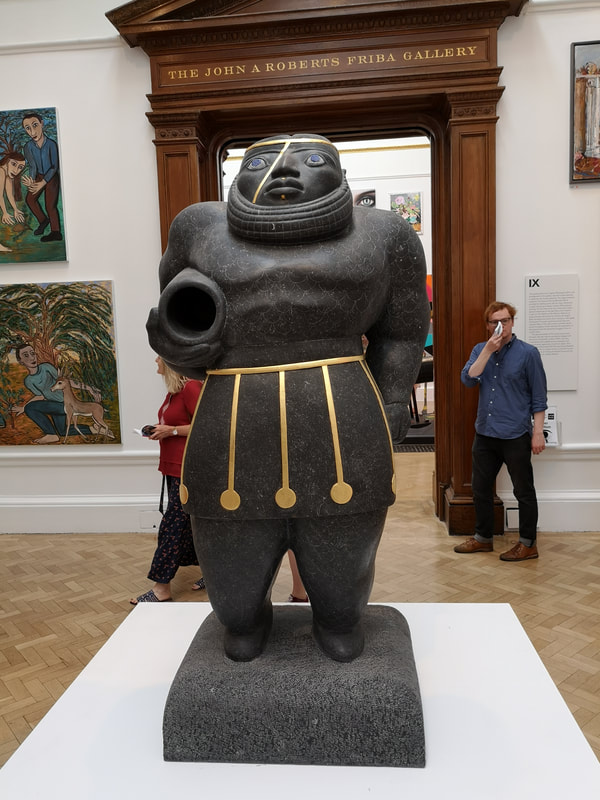
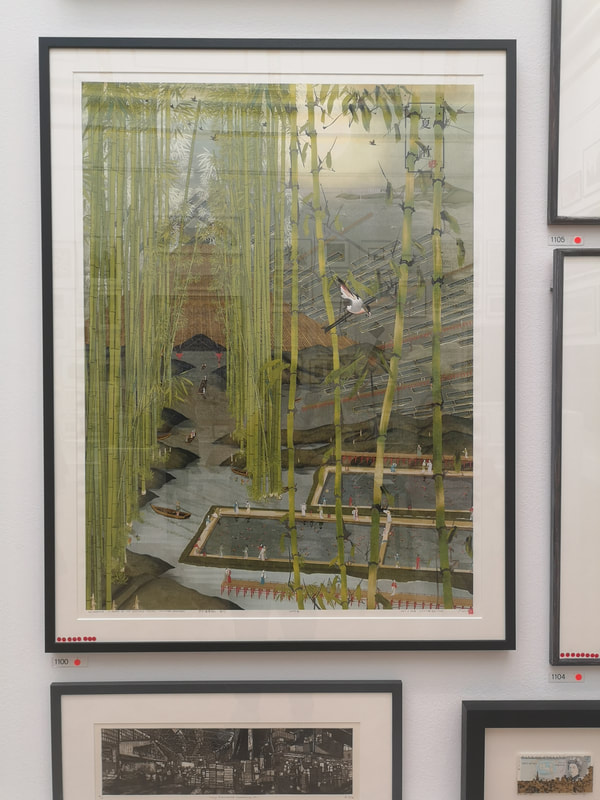
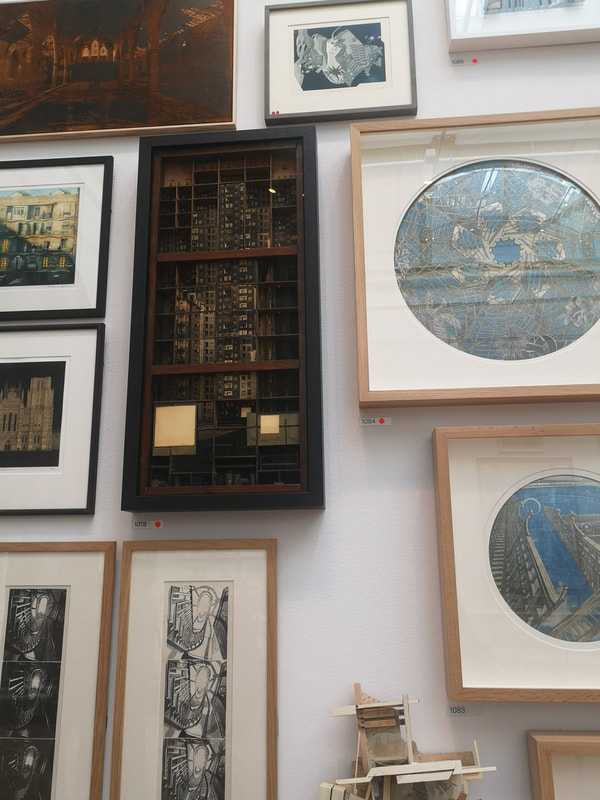
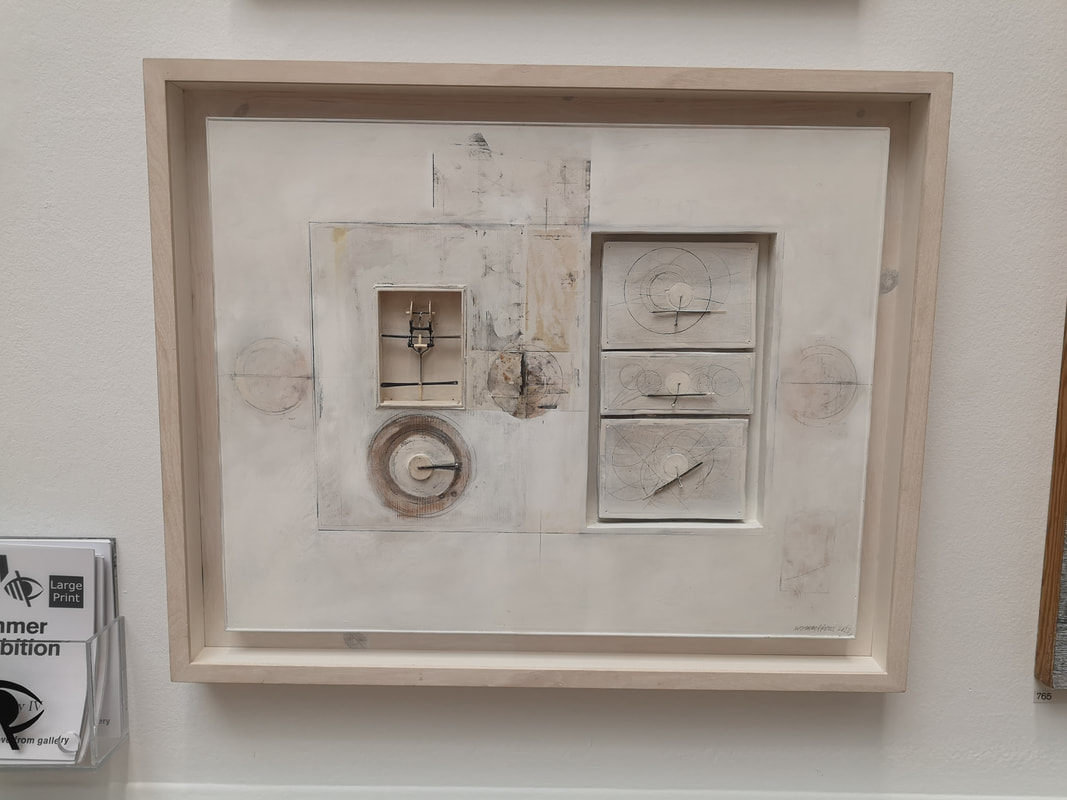
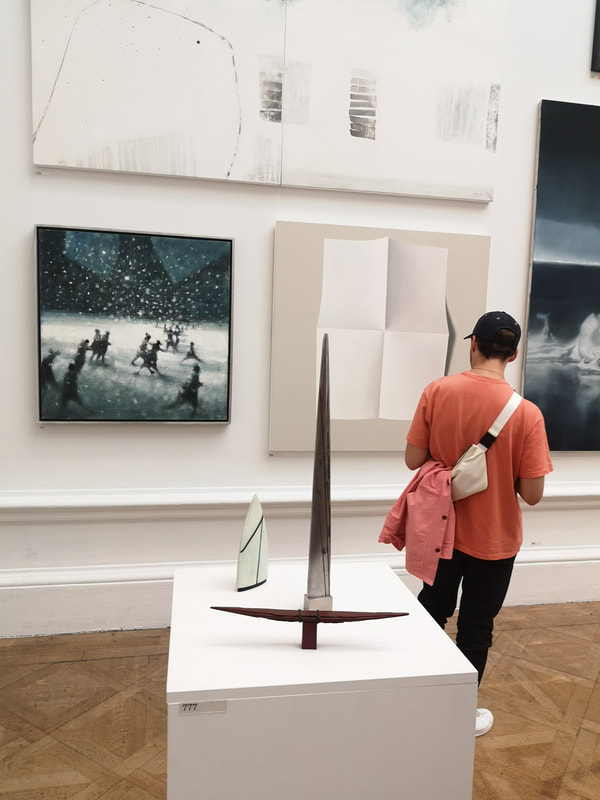
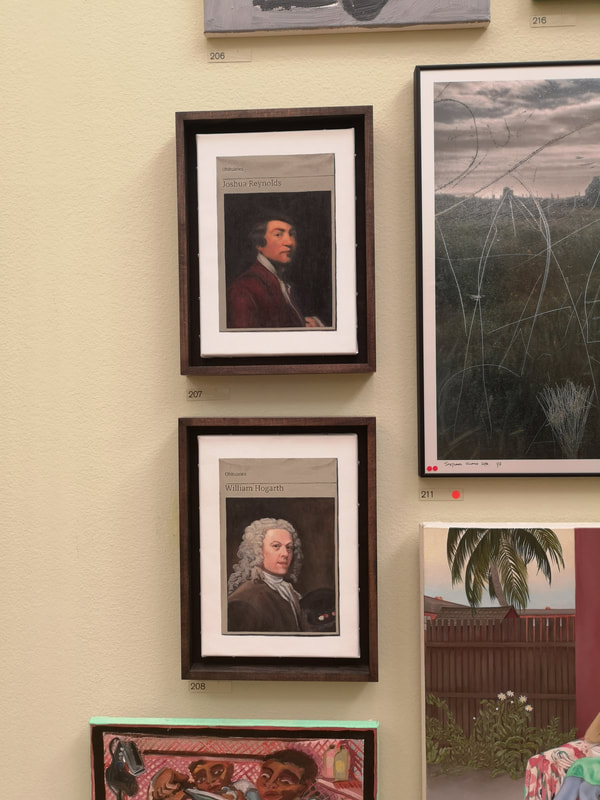
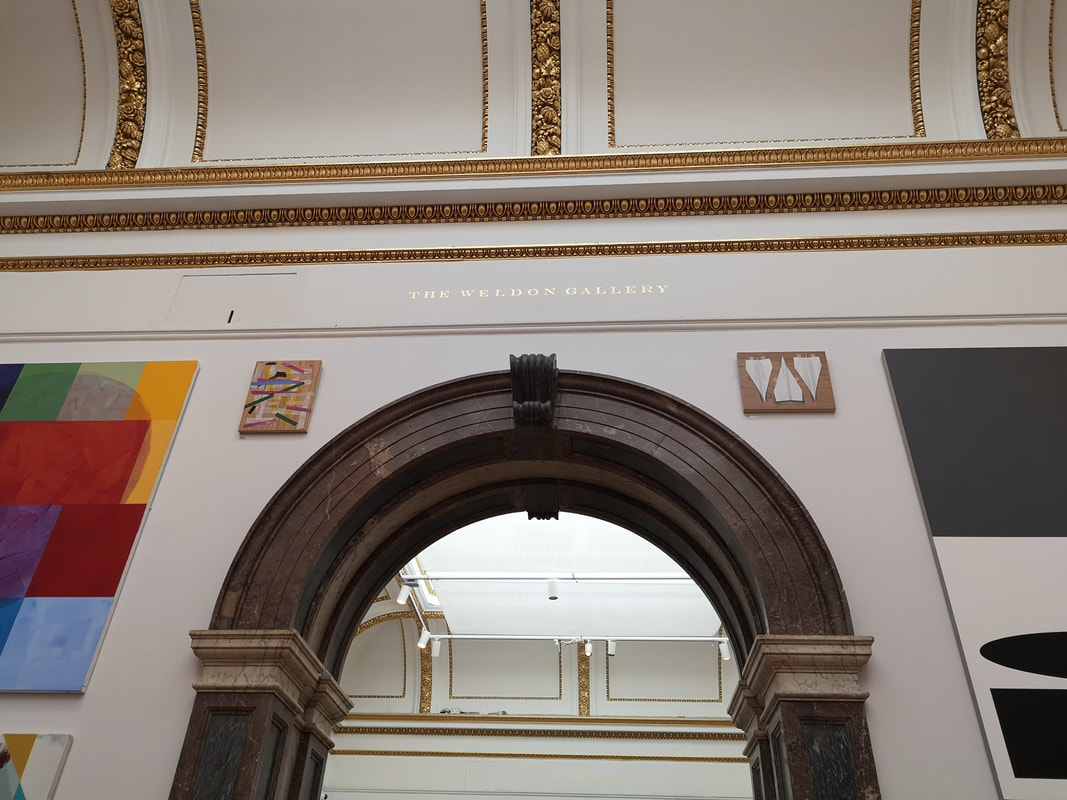
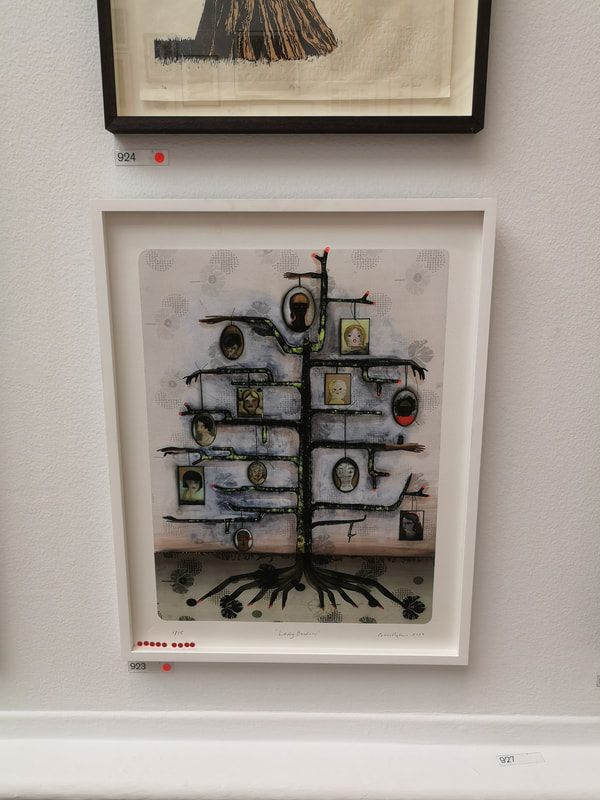
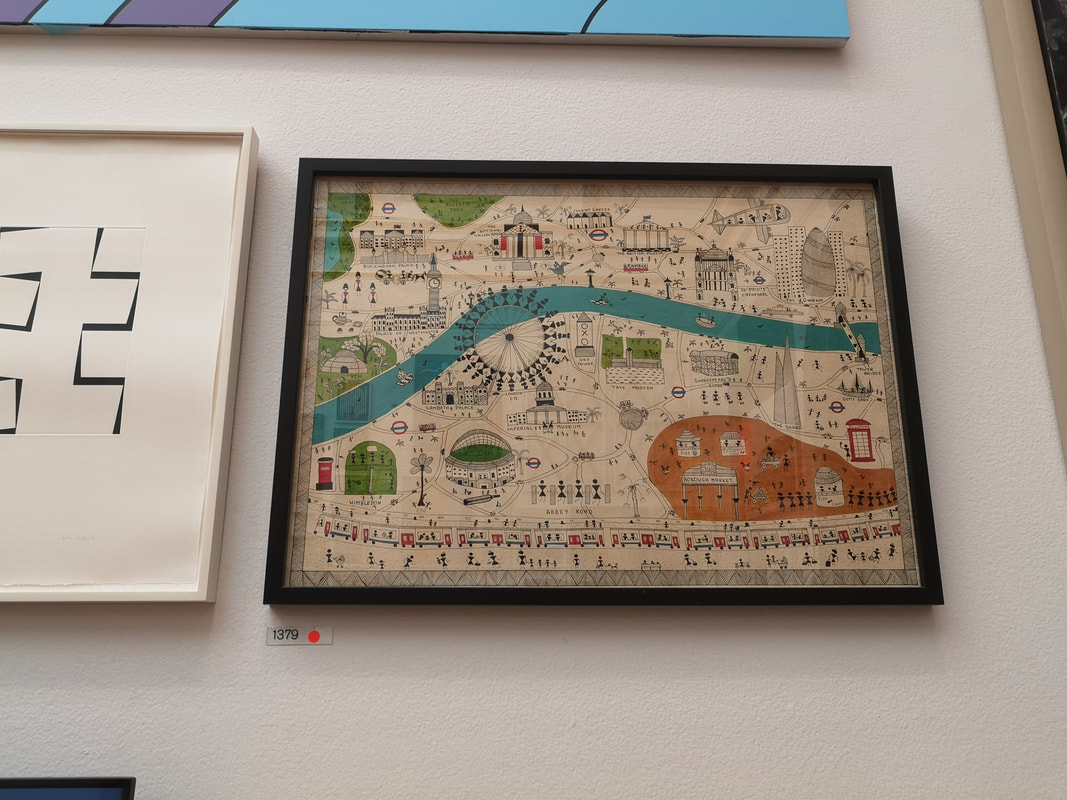
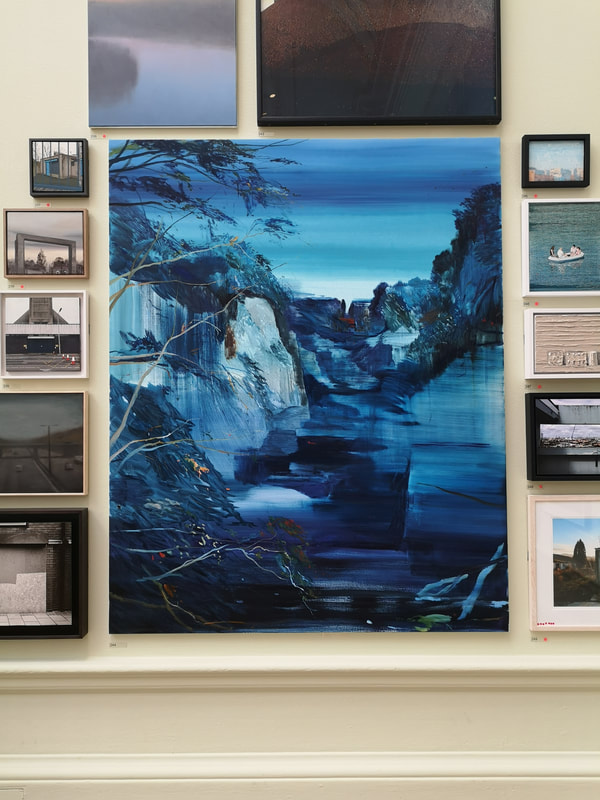
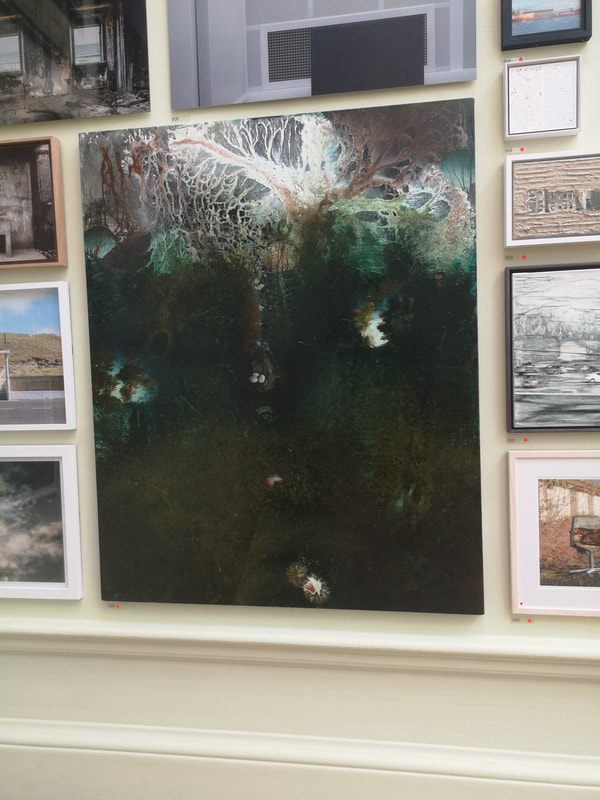
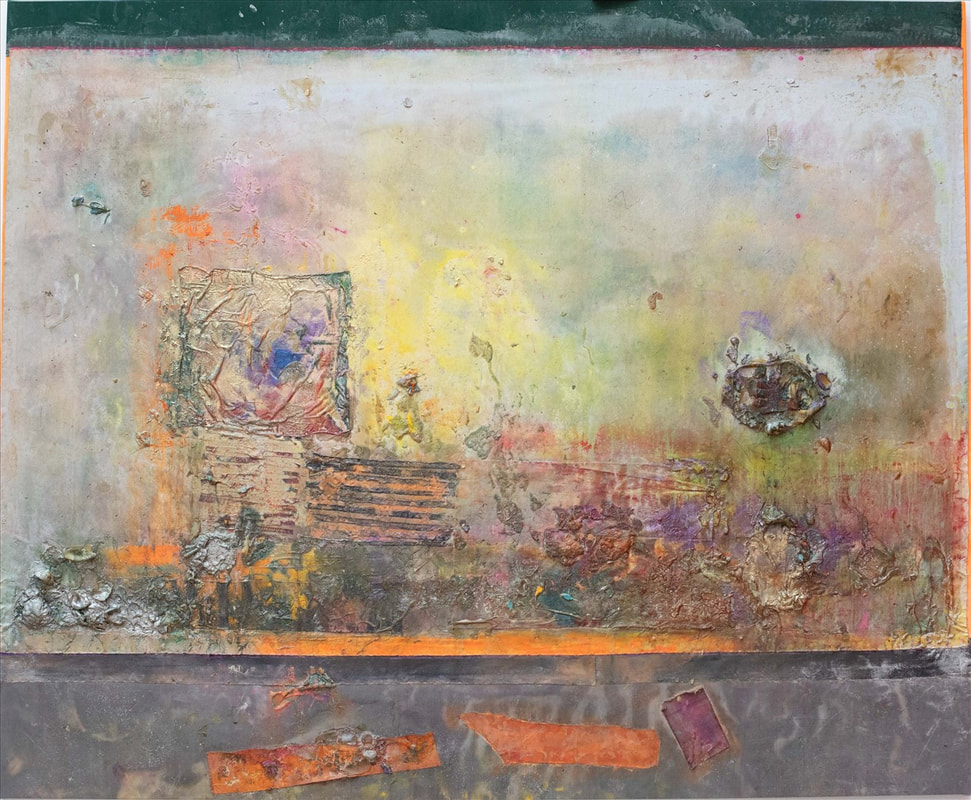
 RSS Feed
RSS Feed